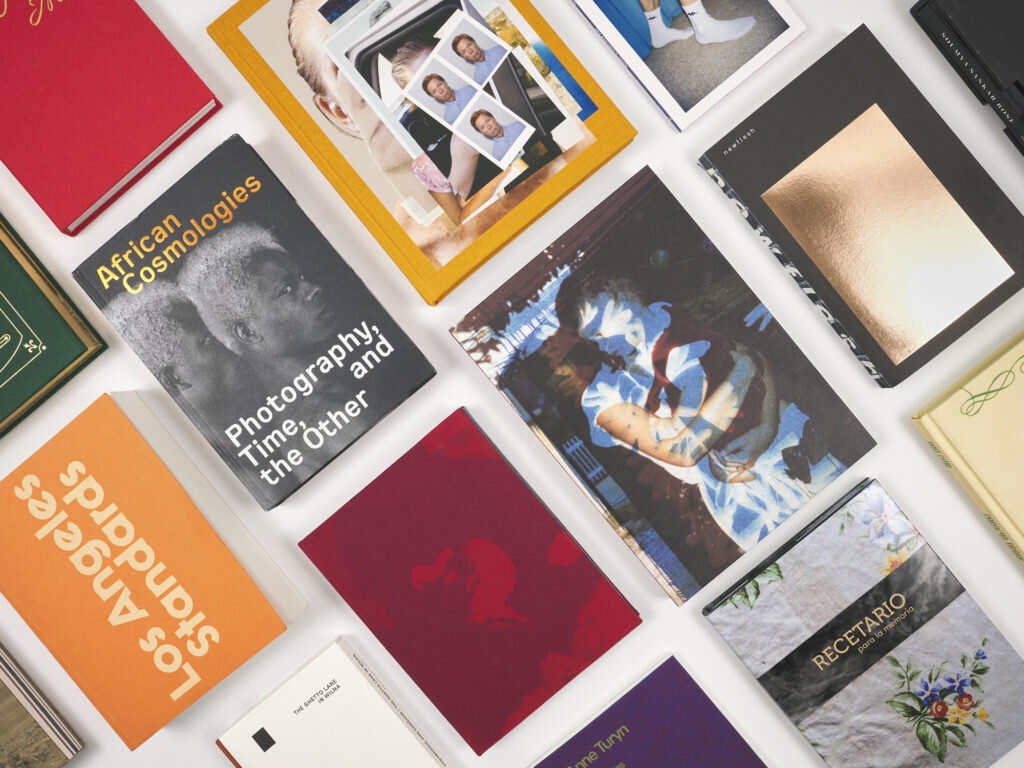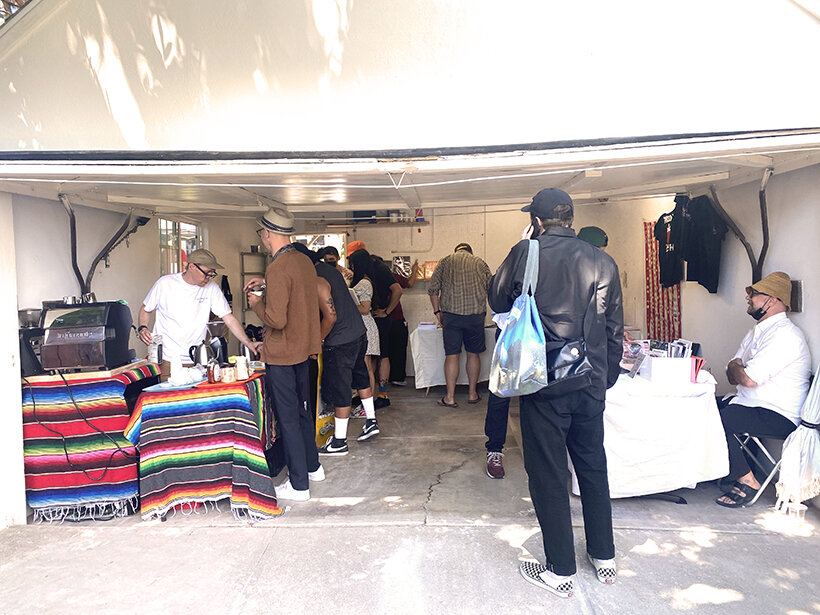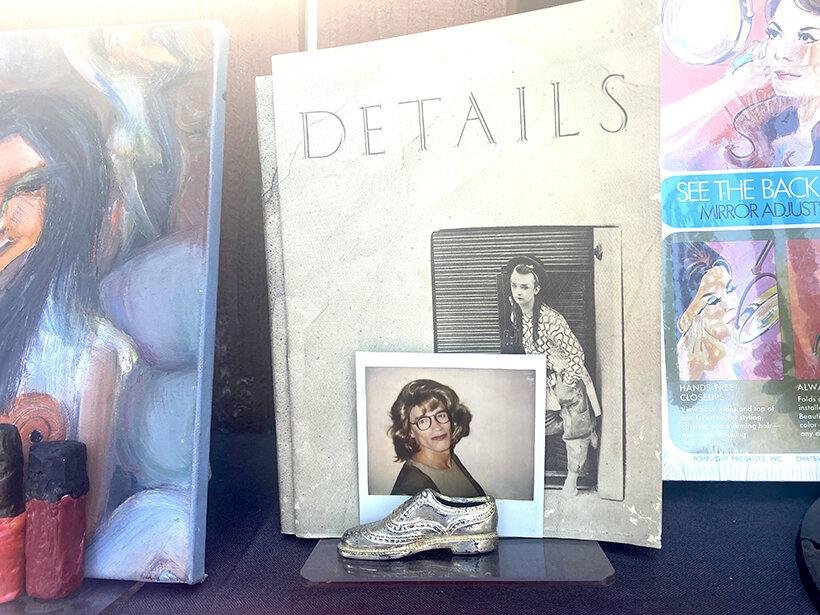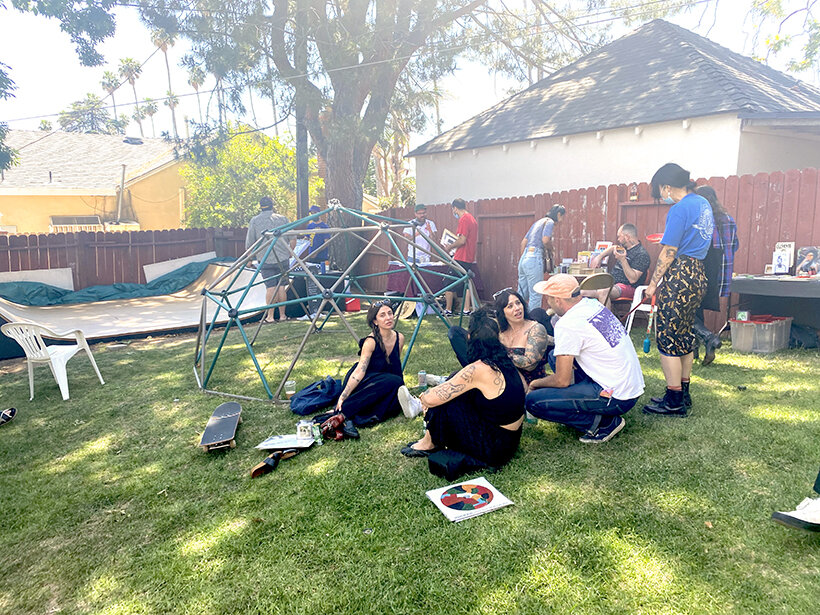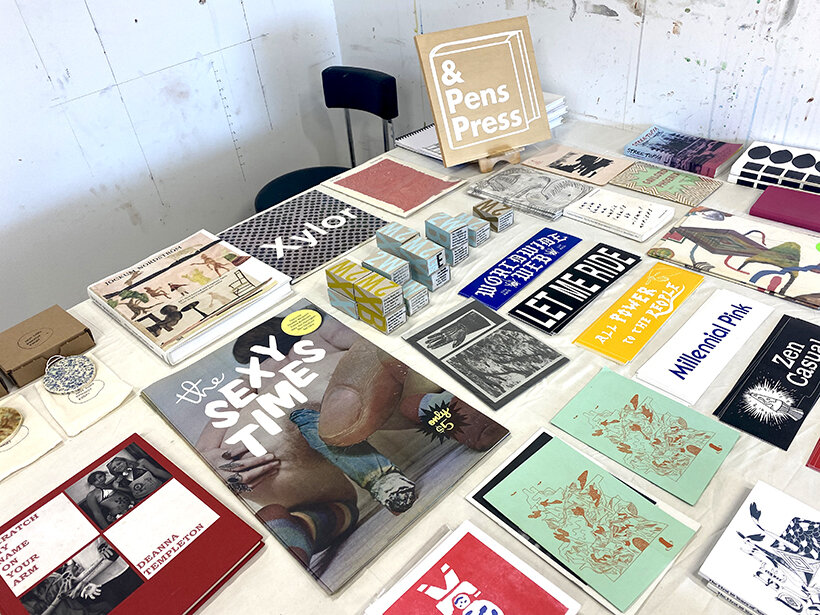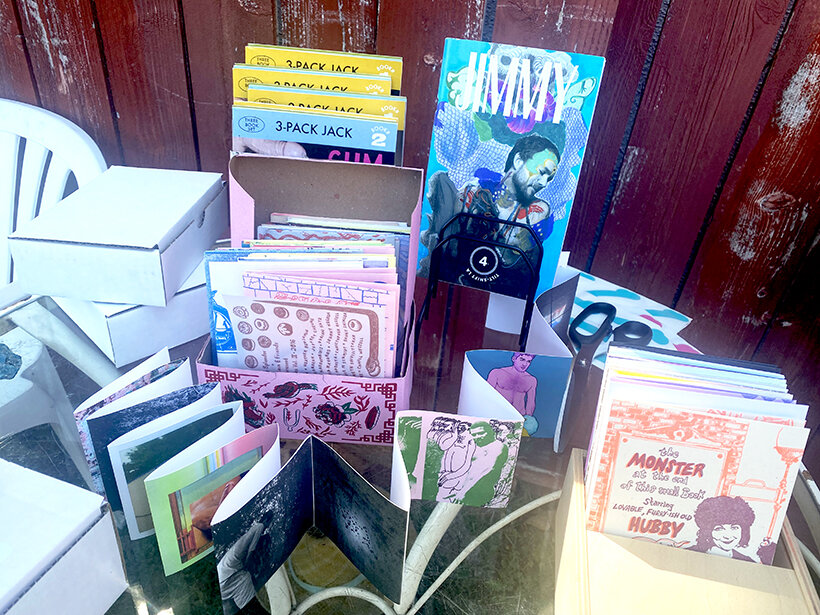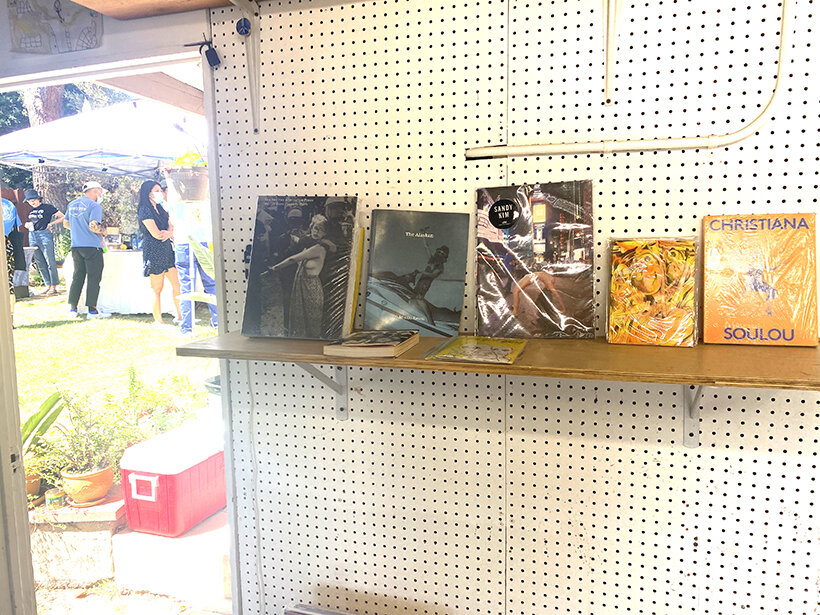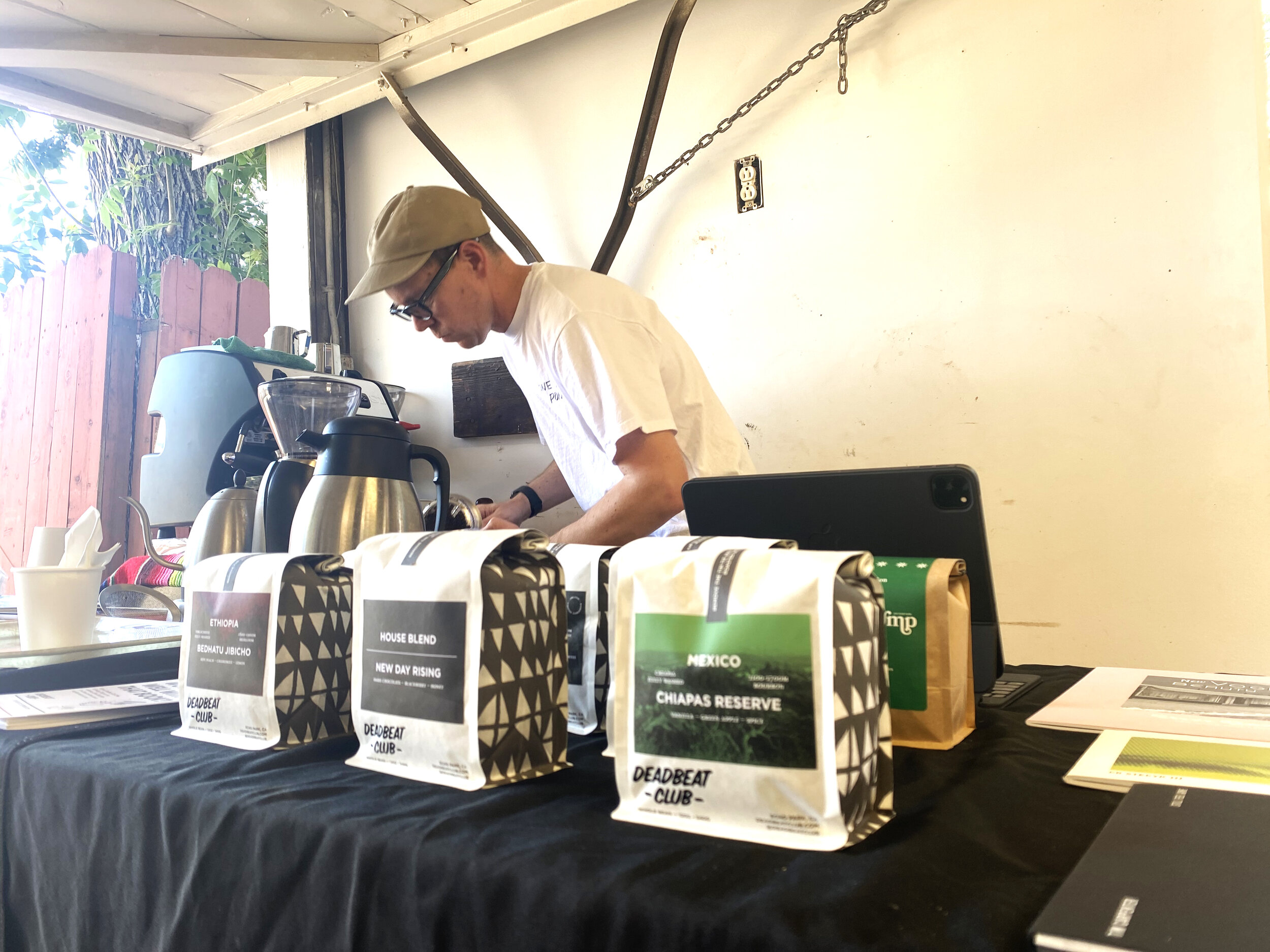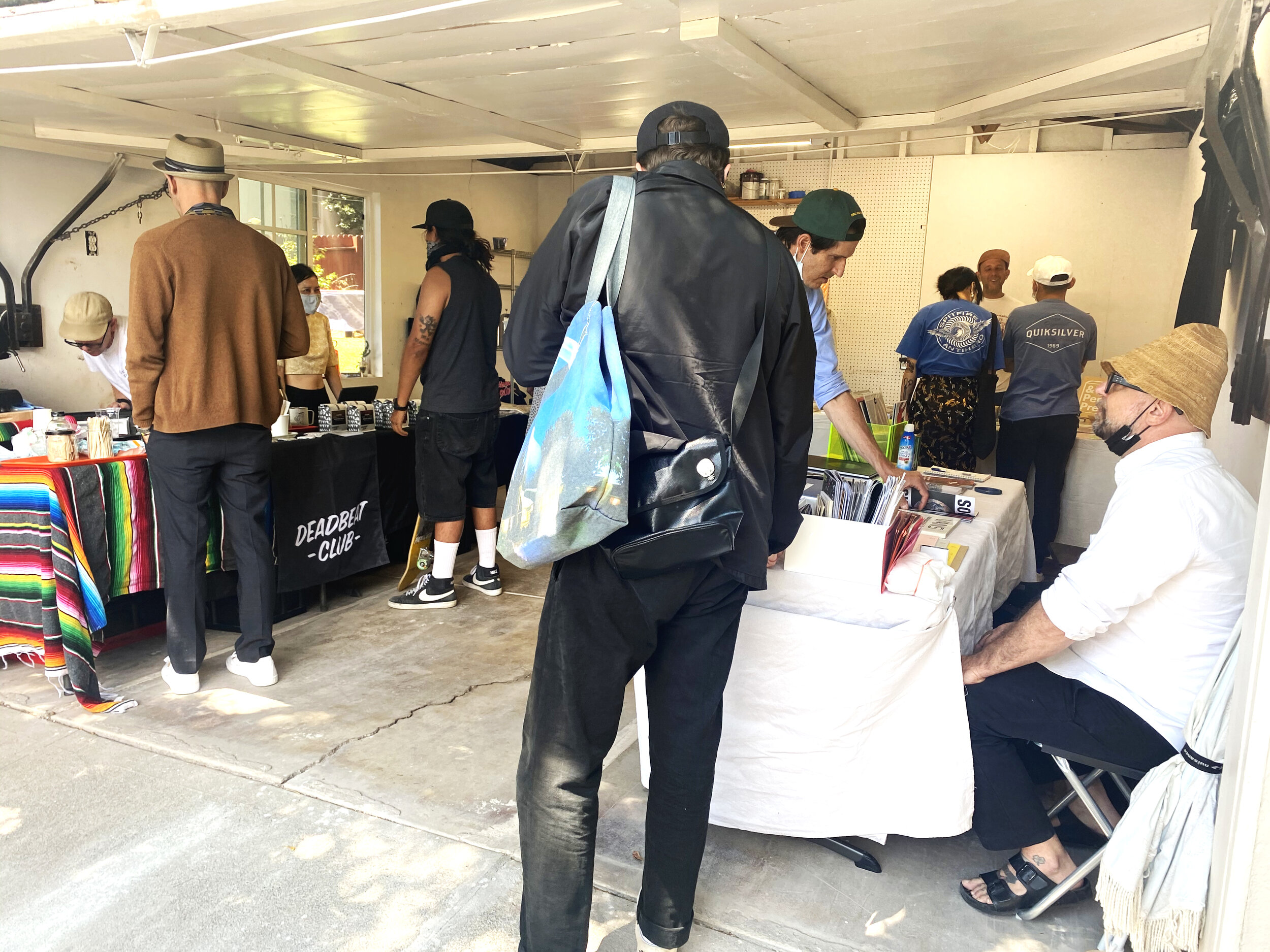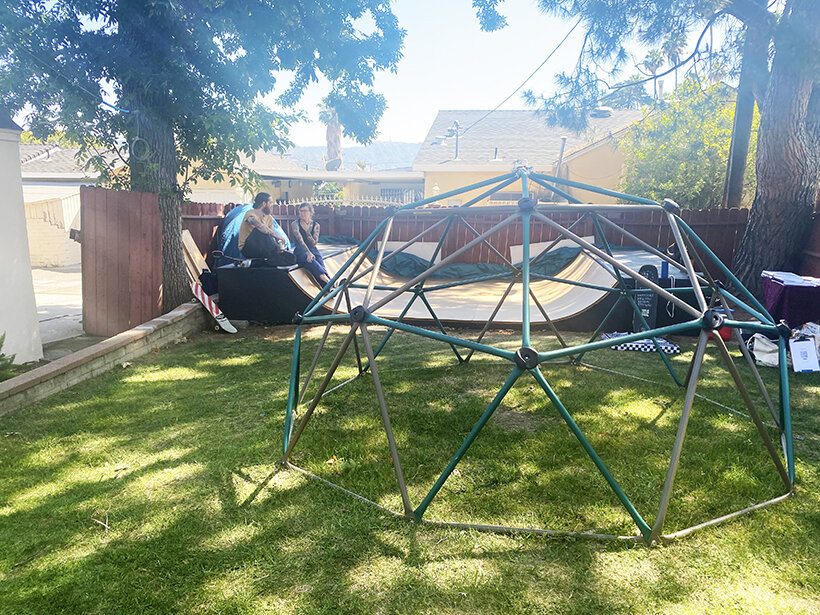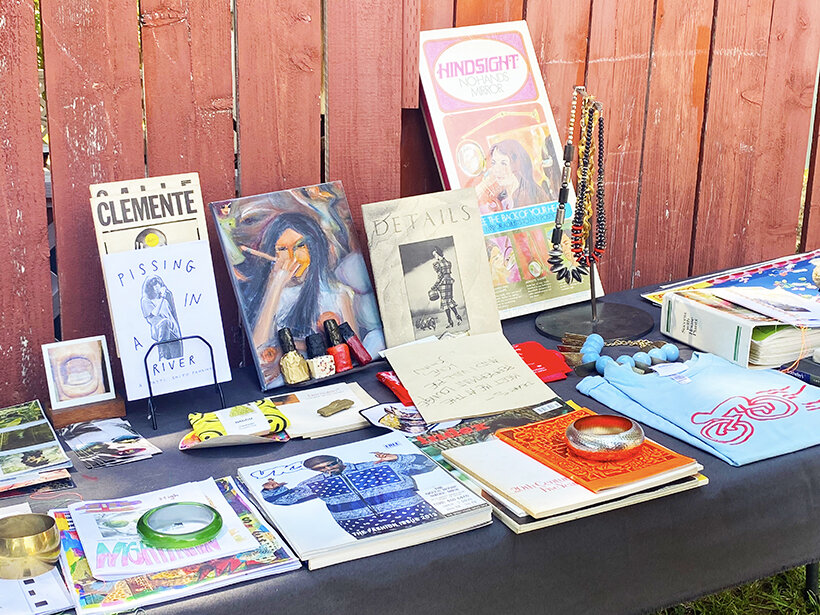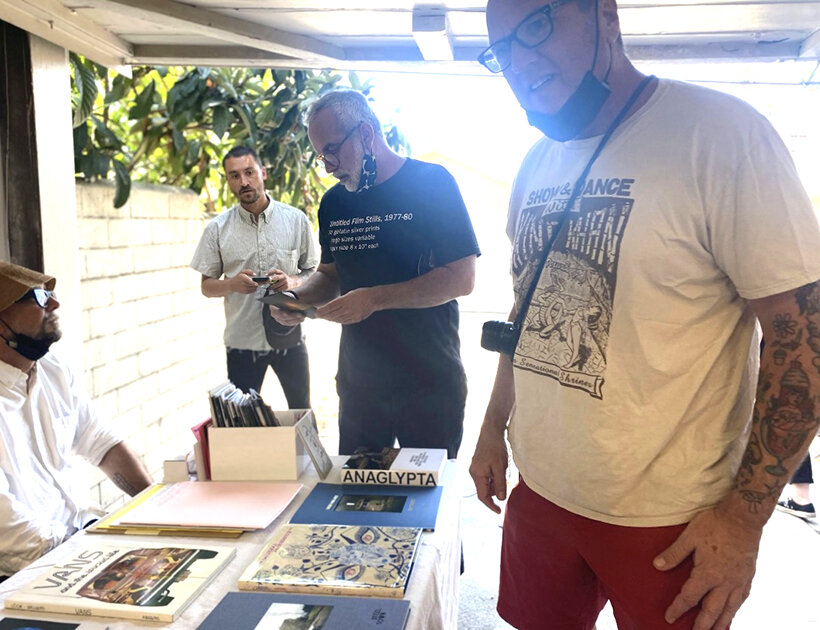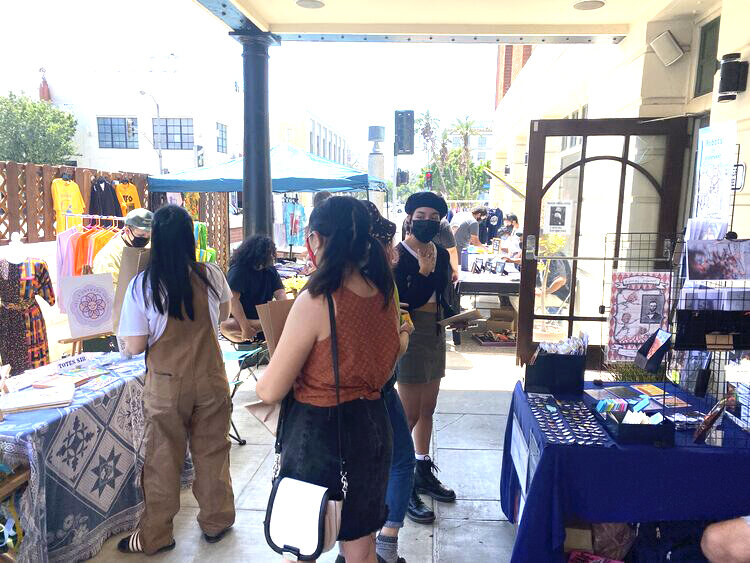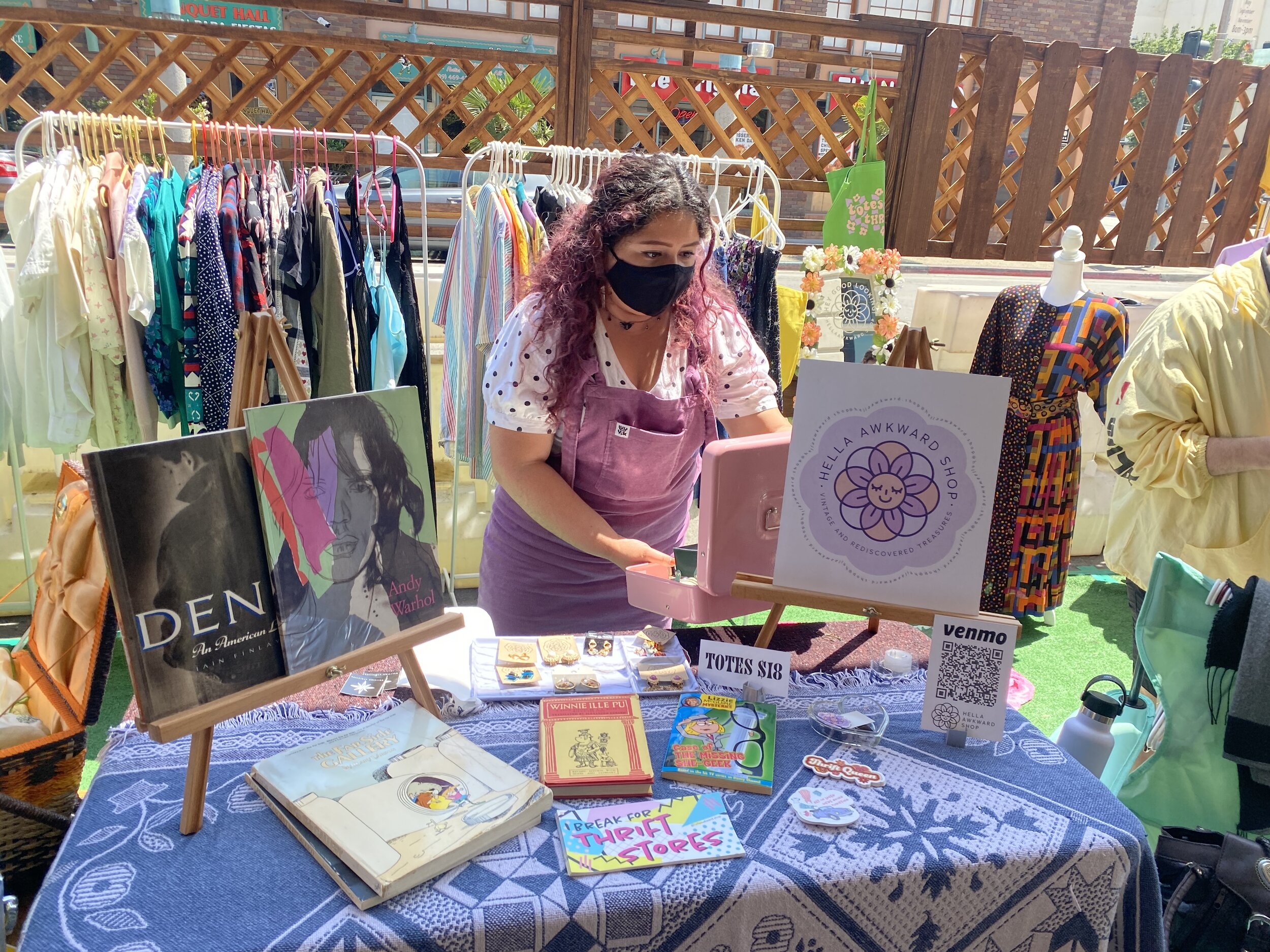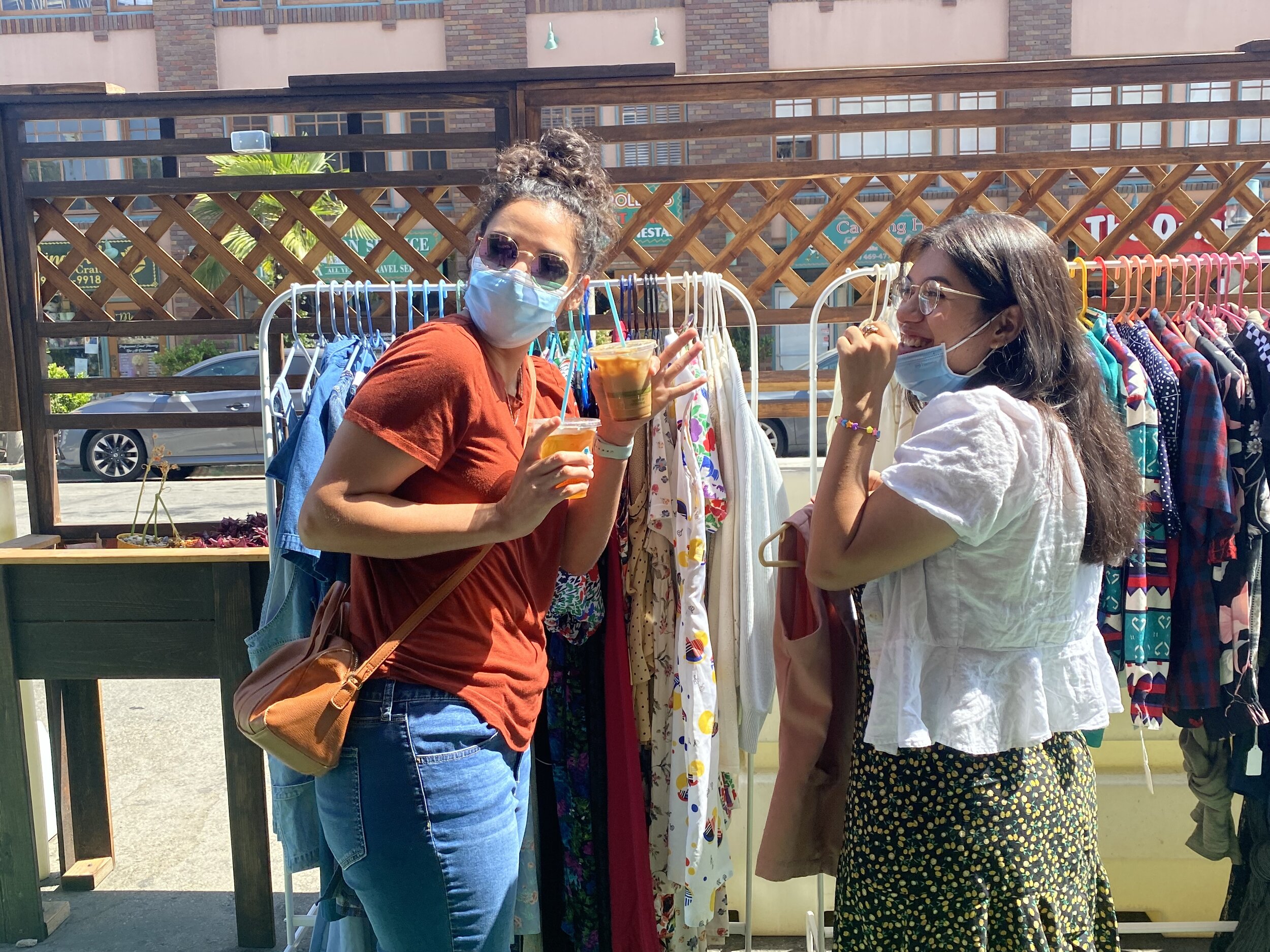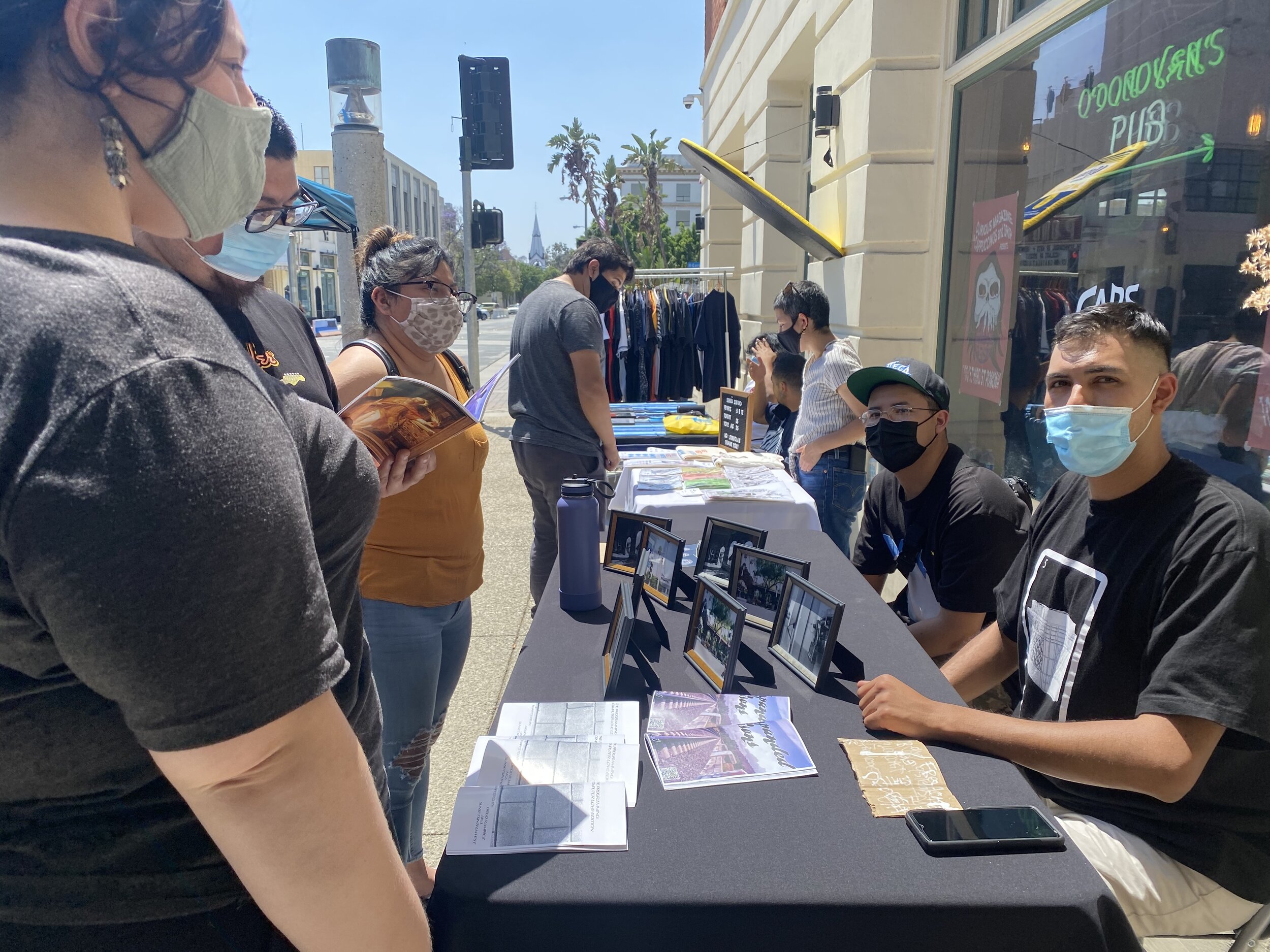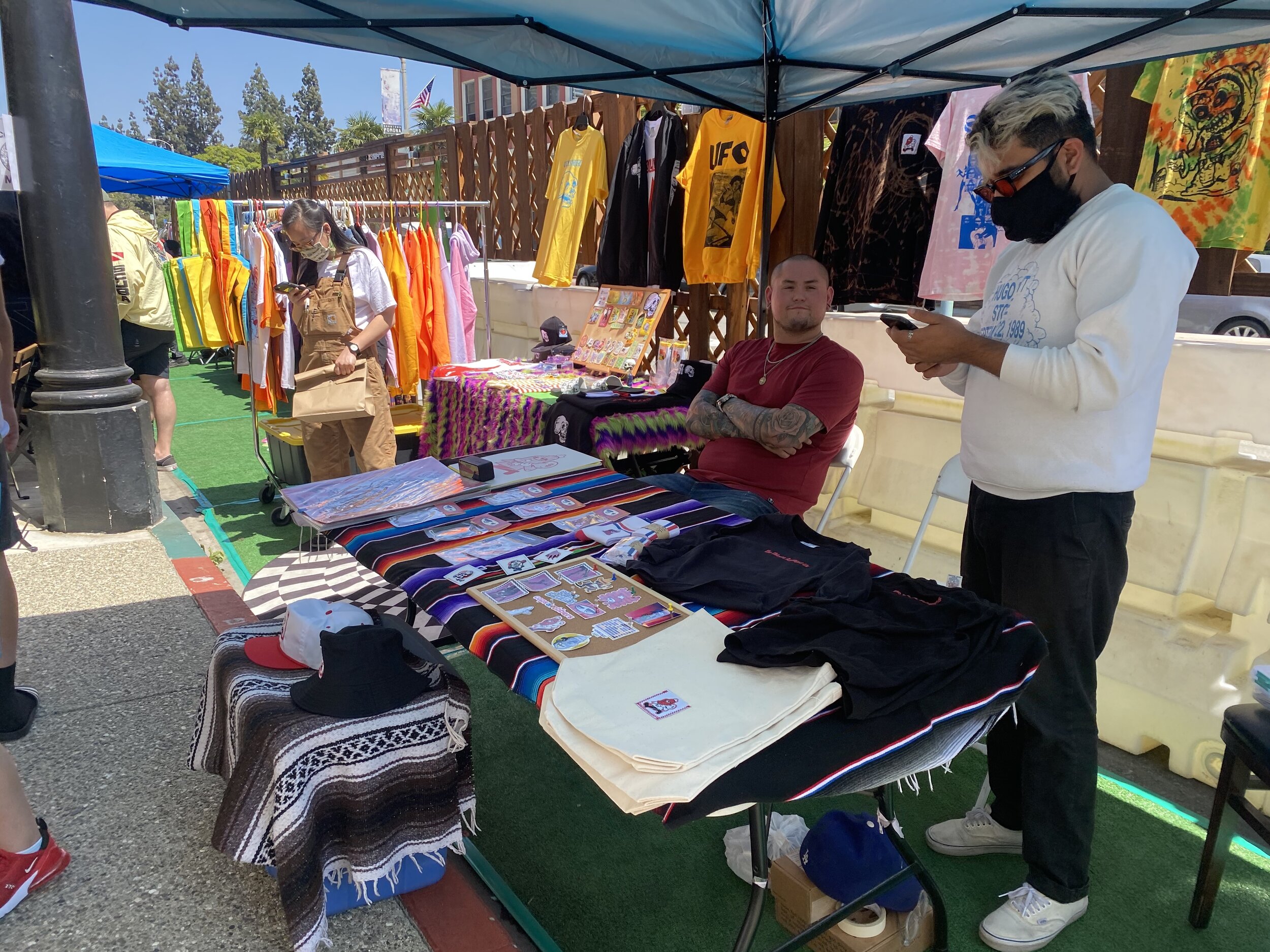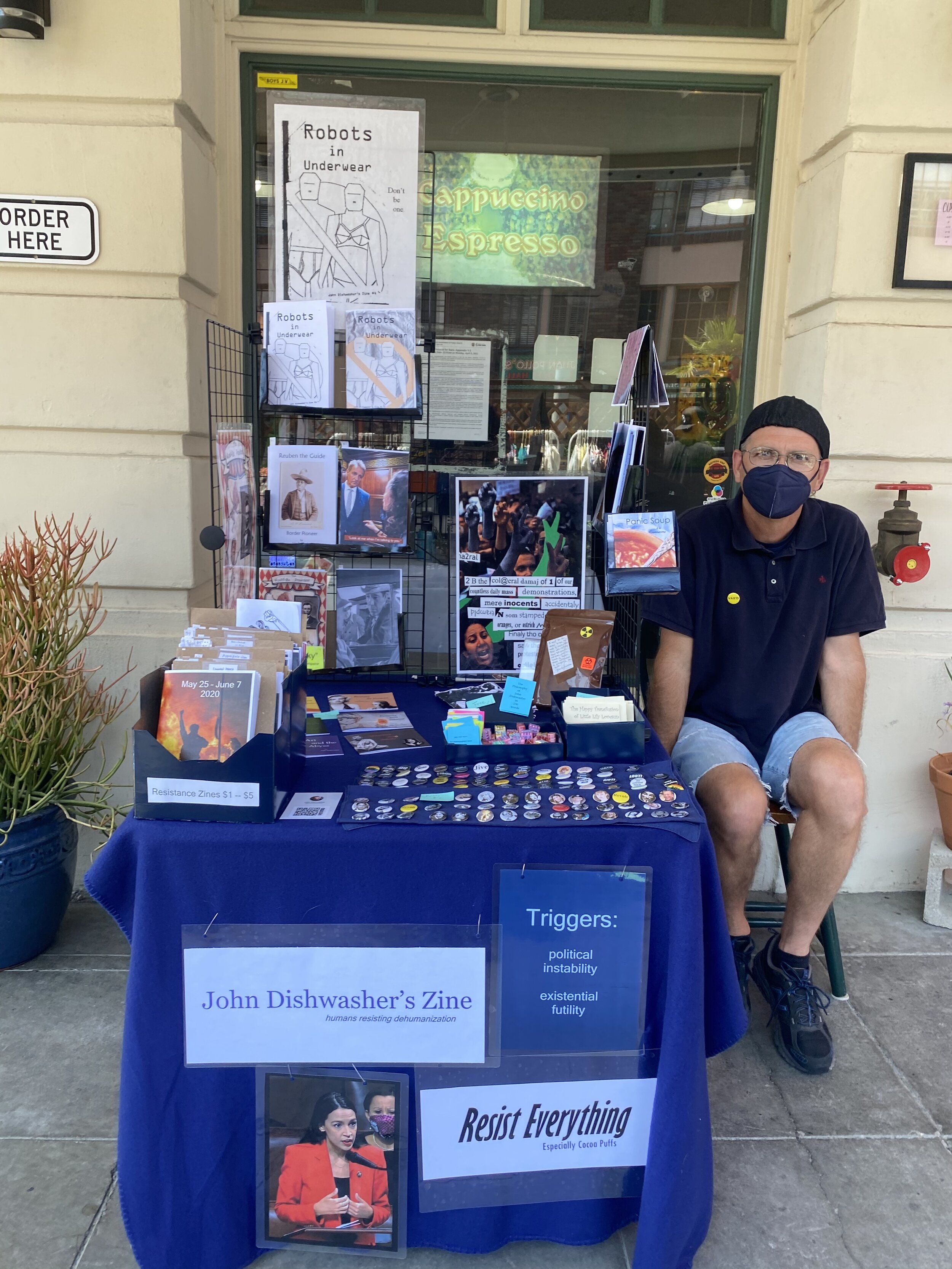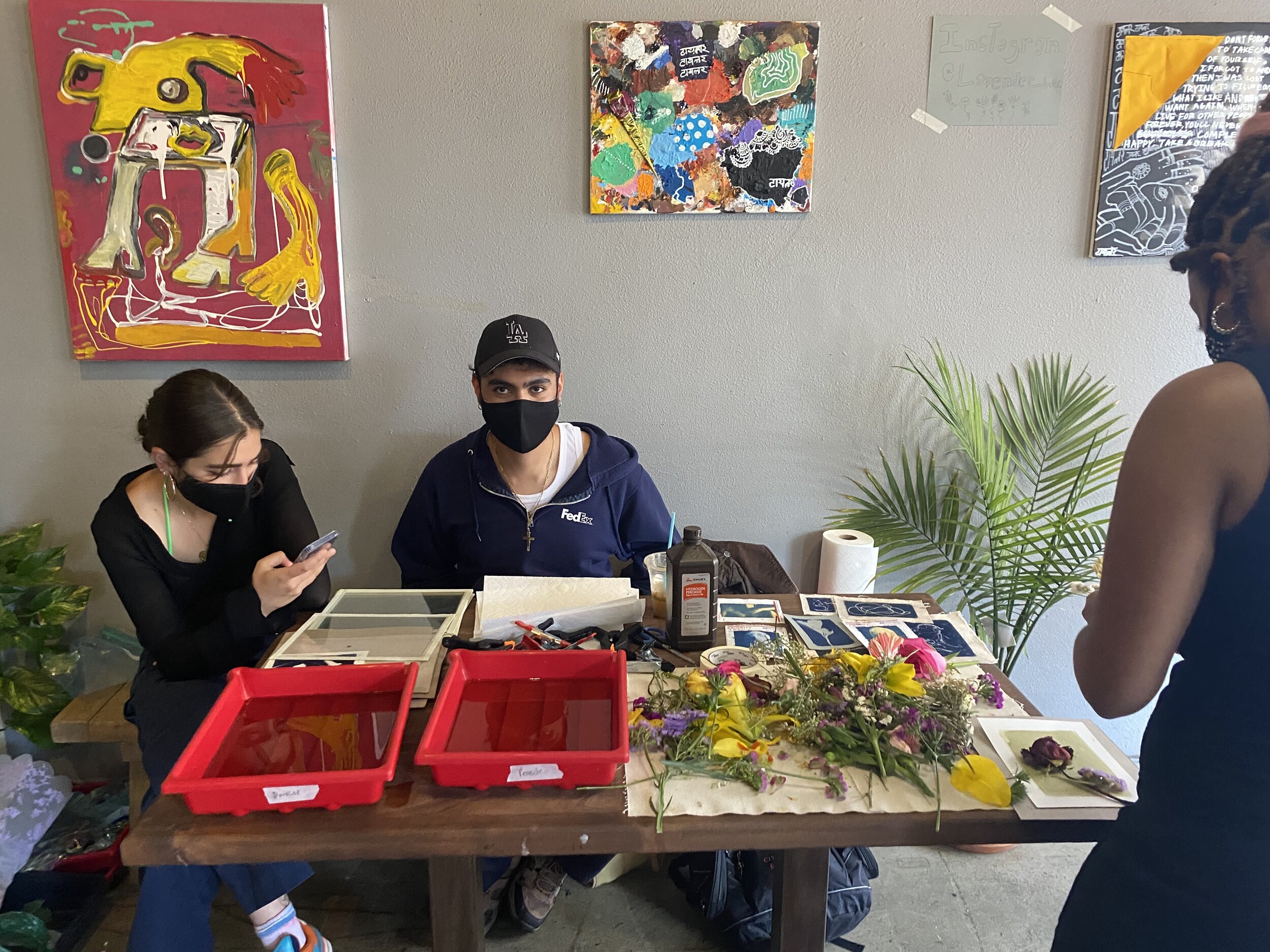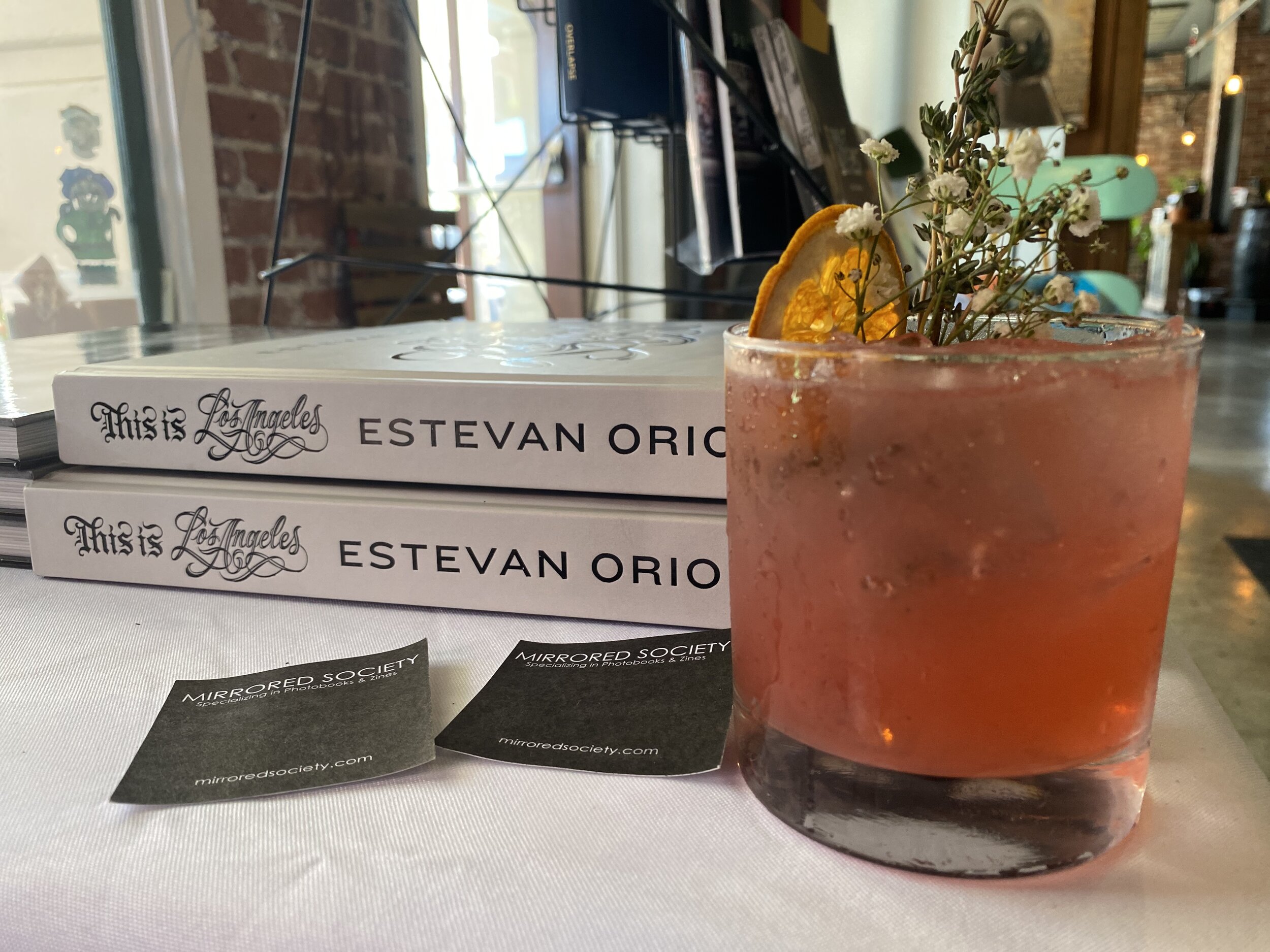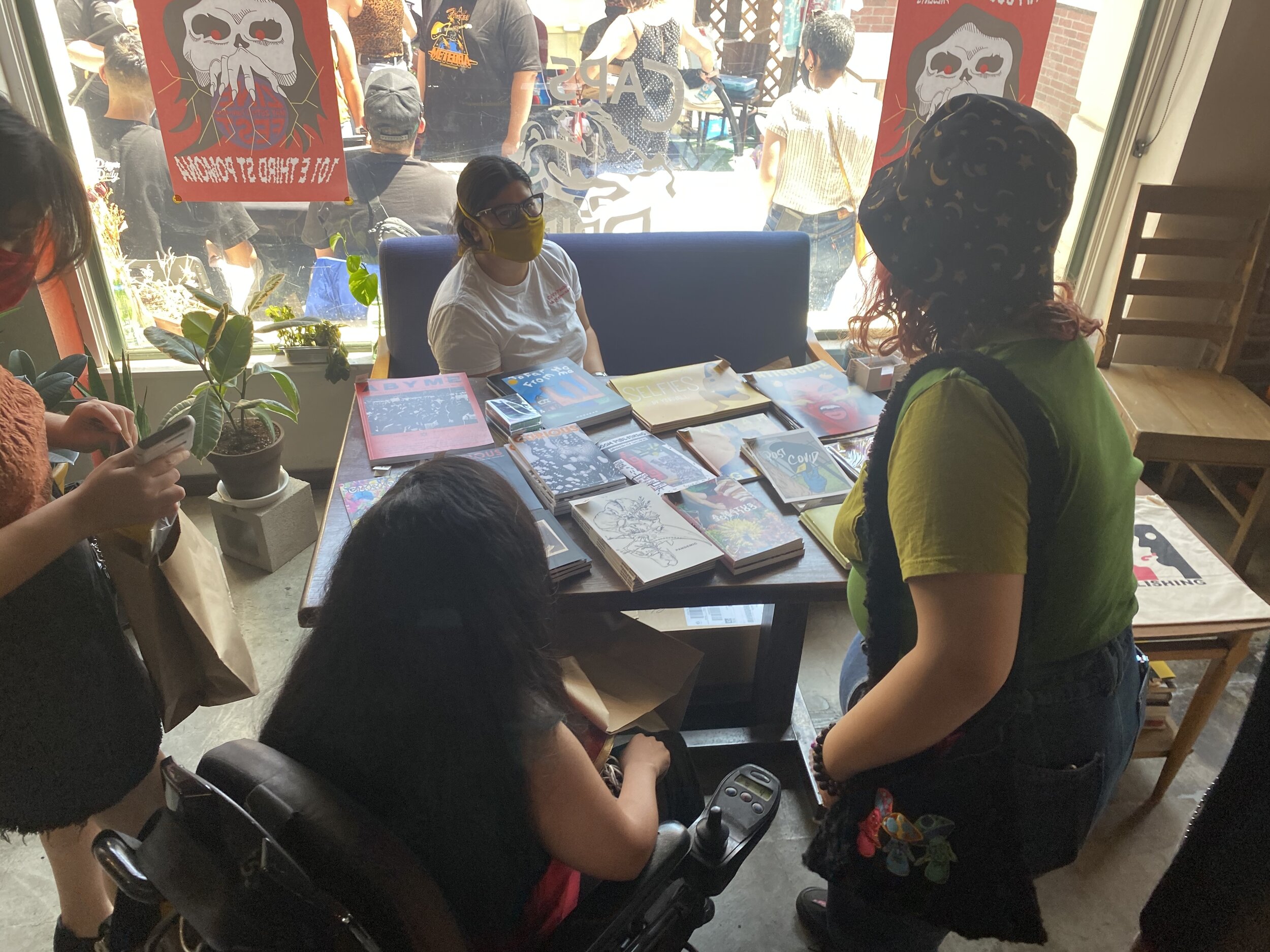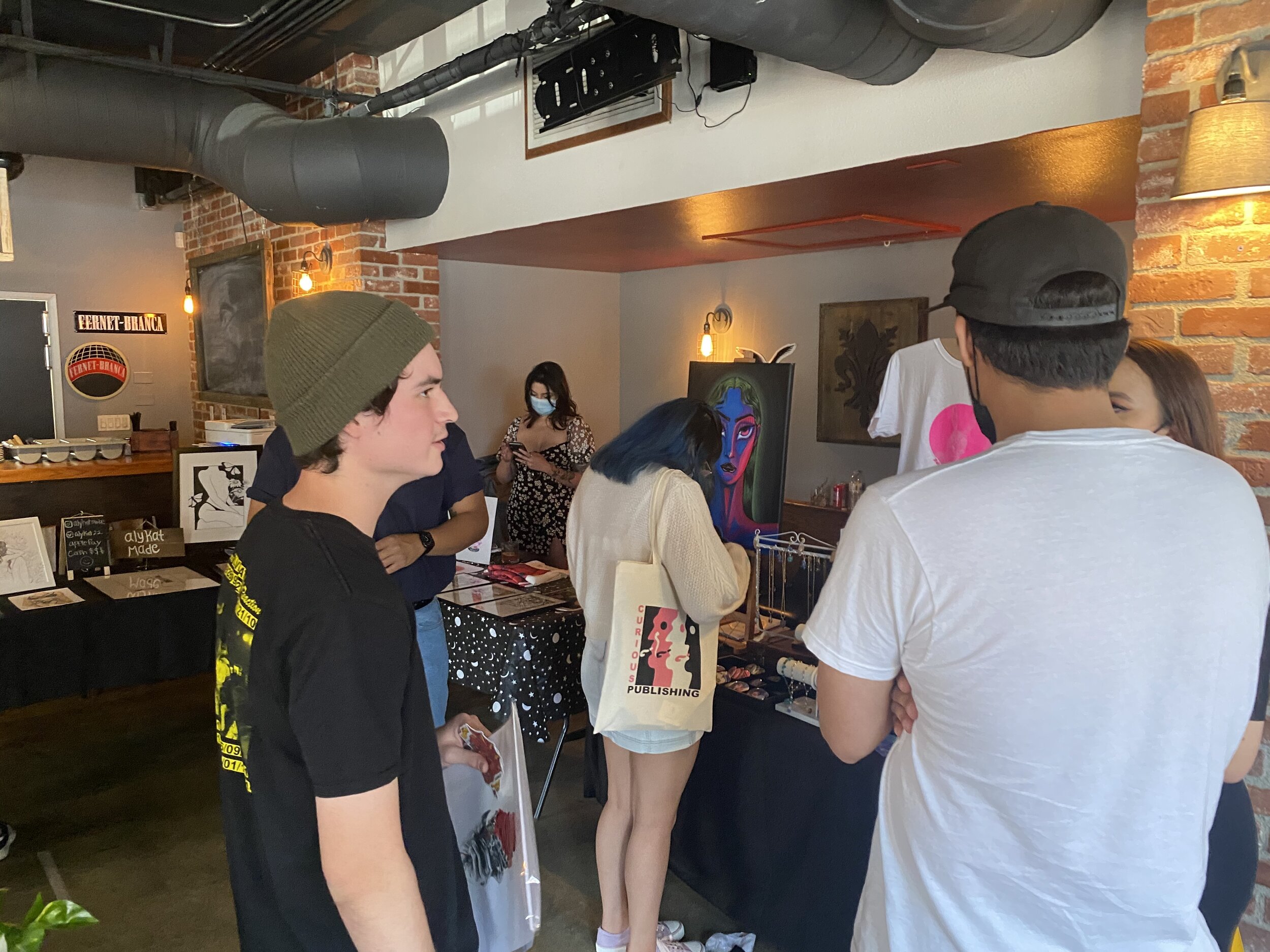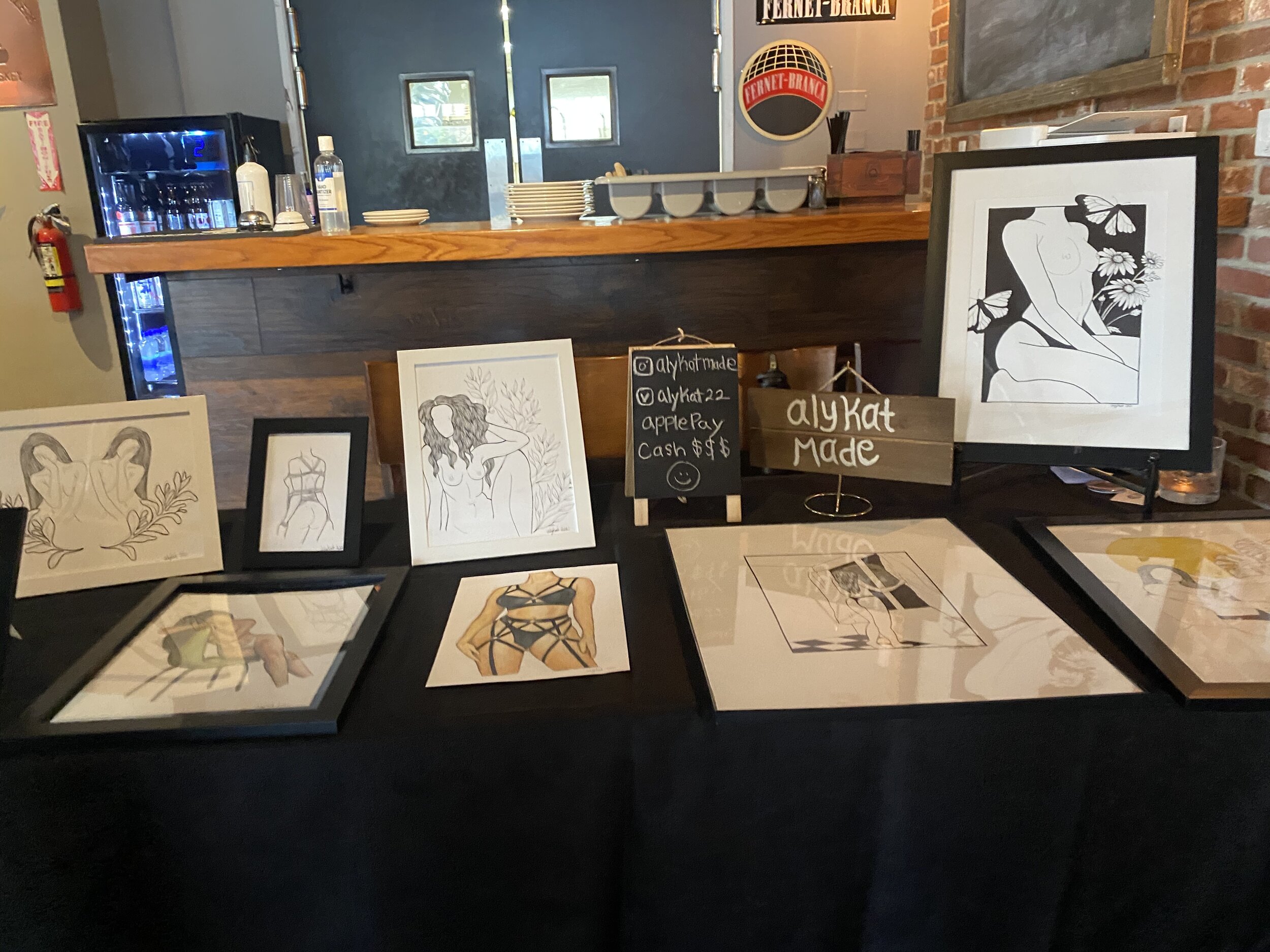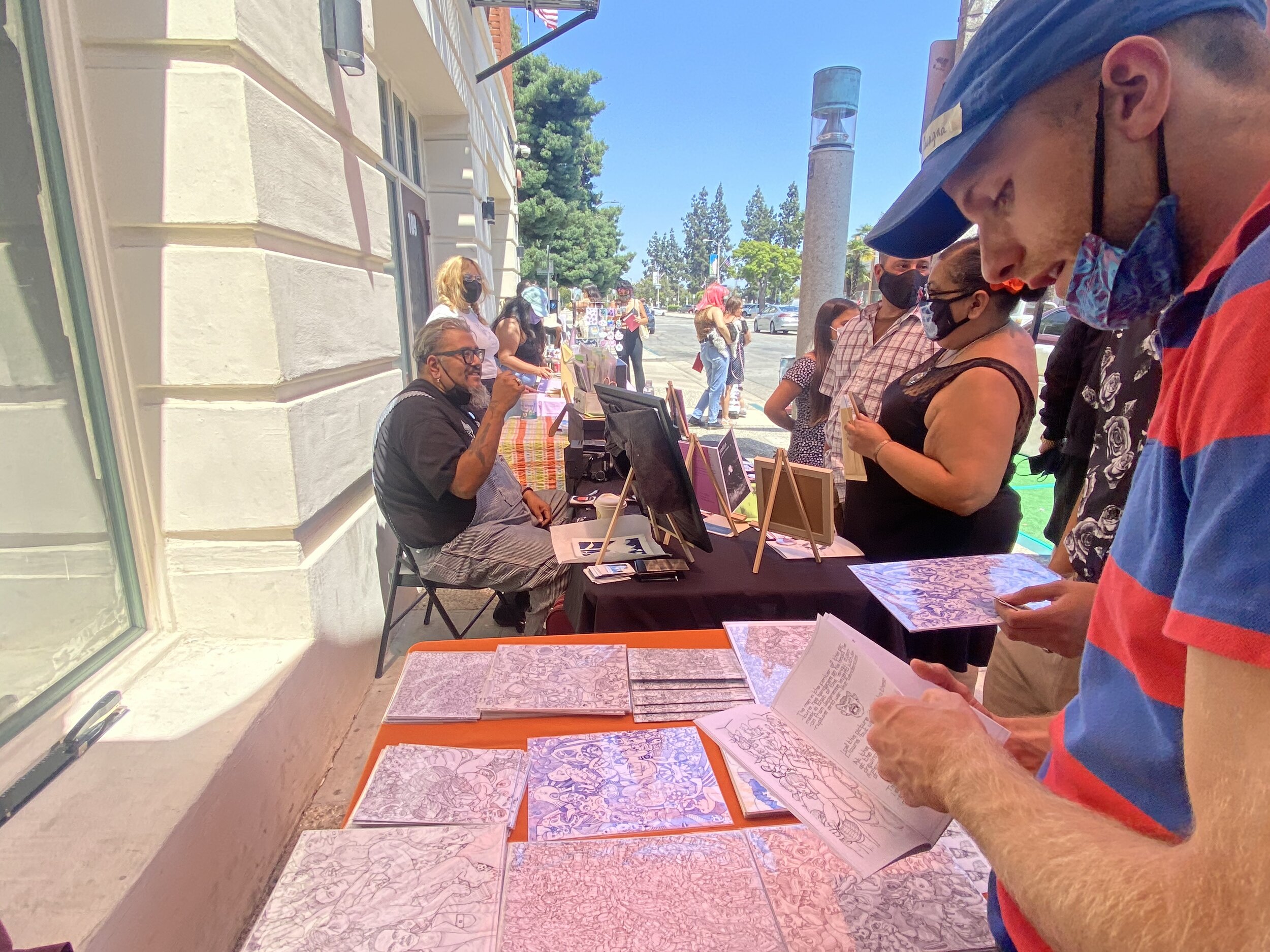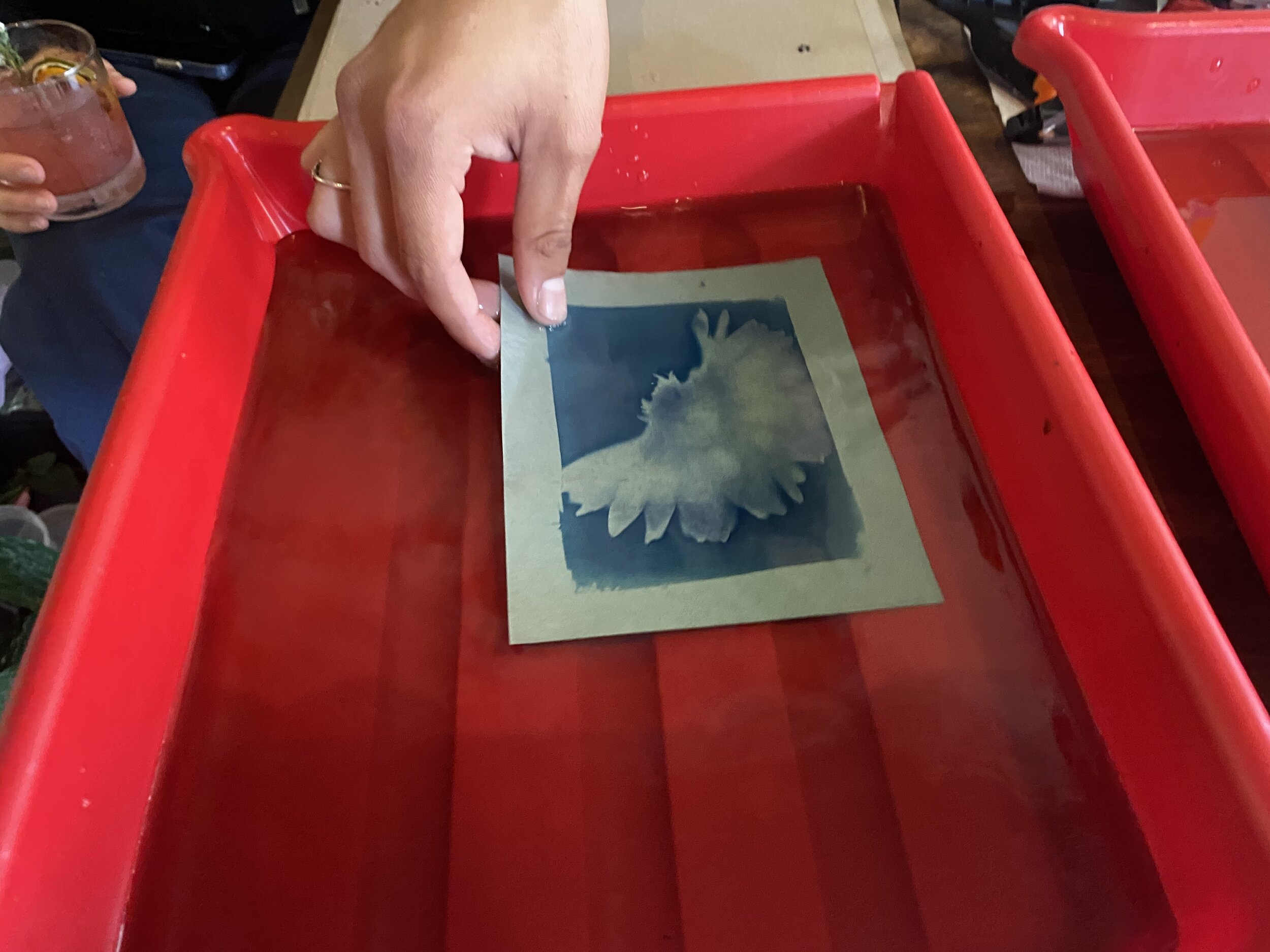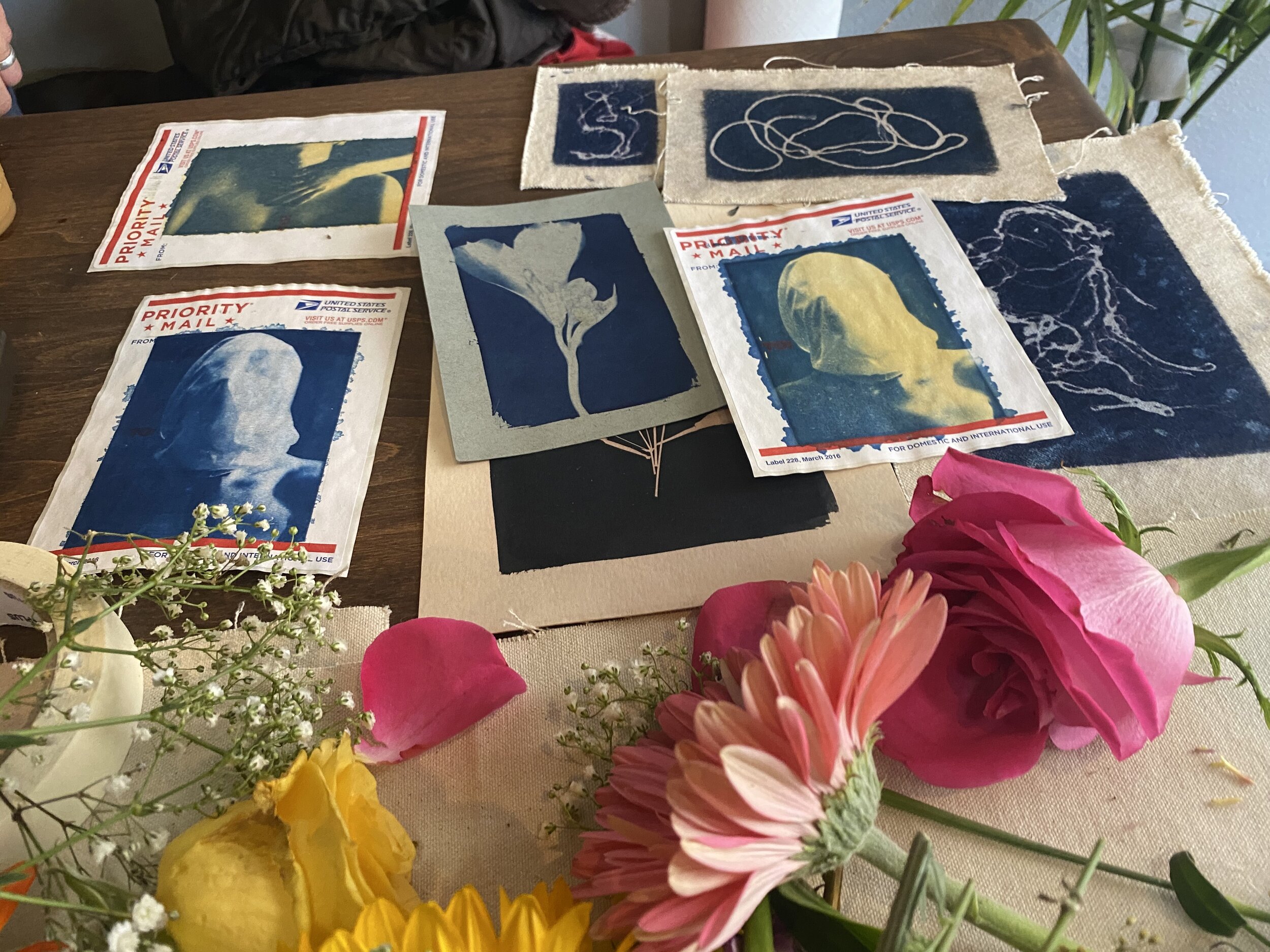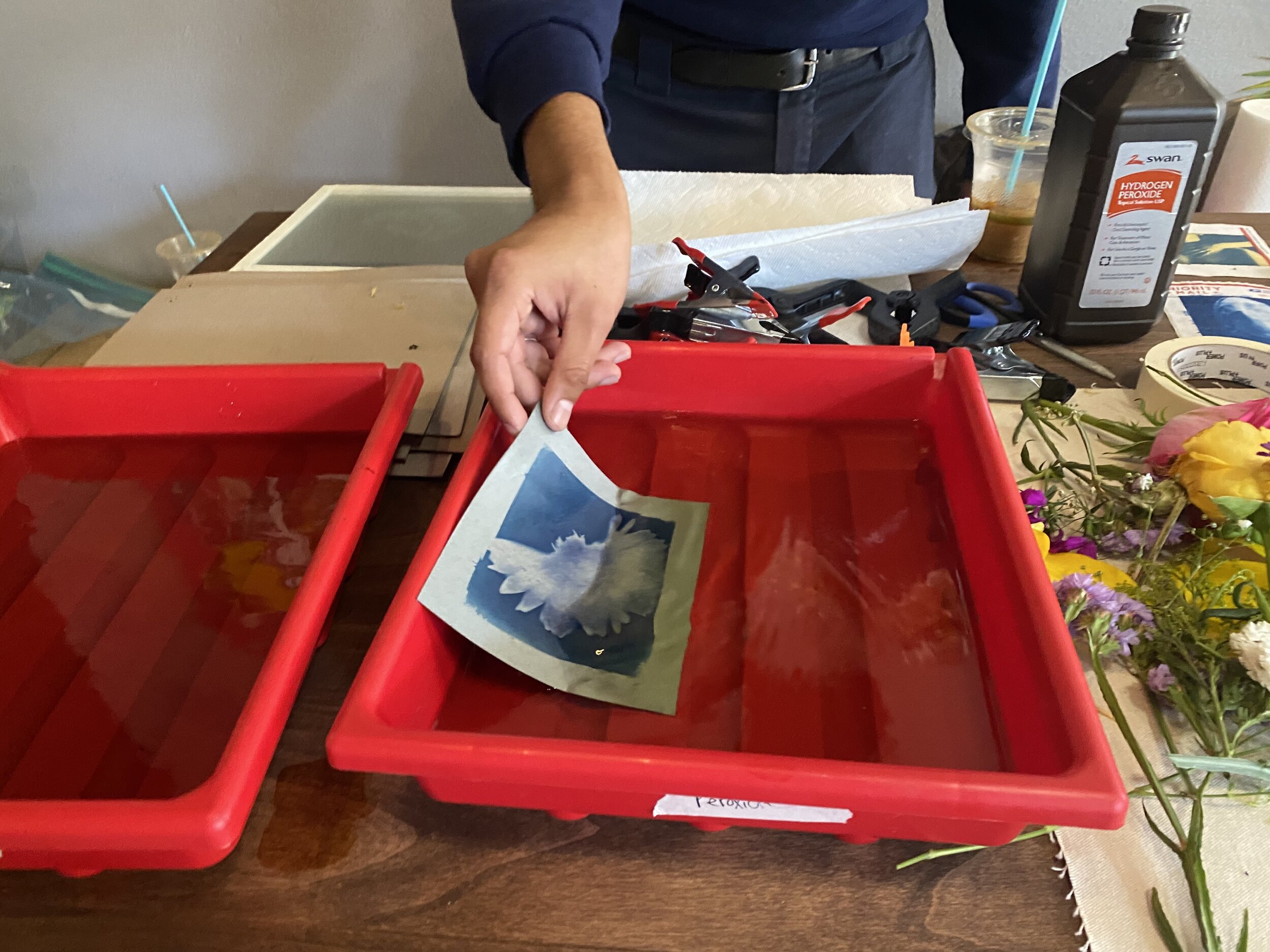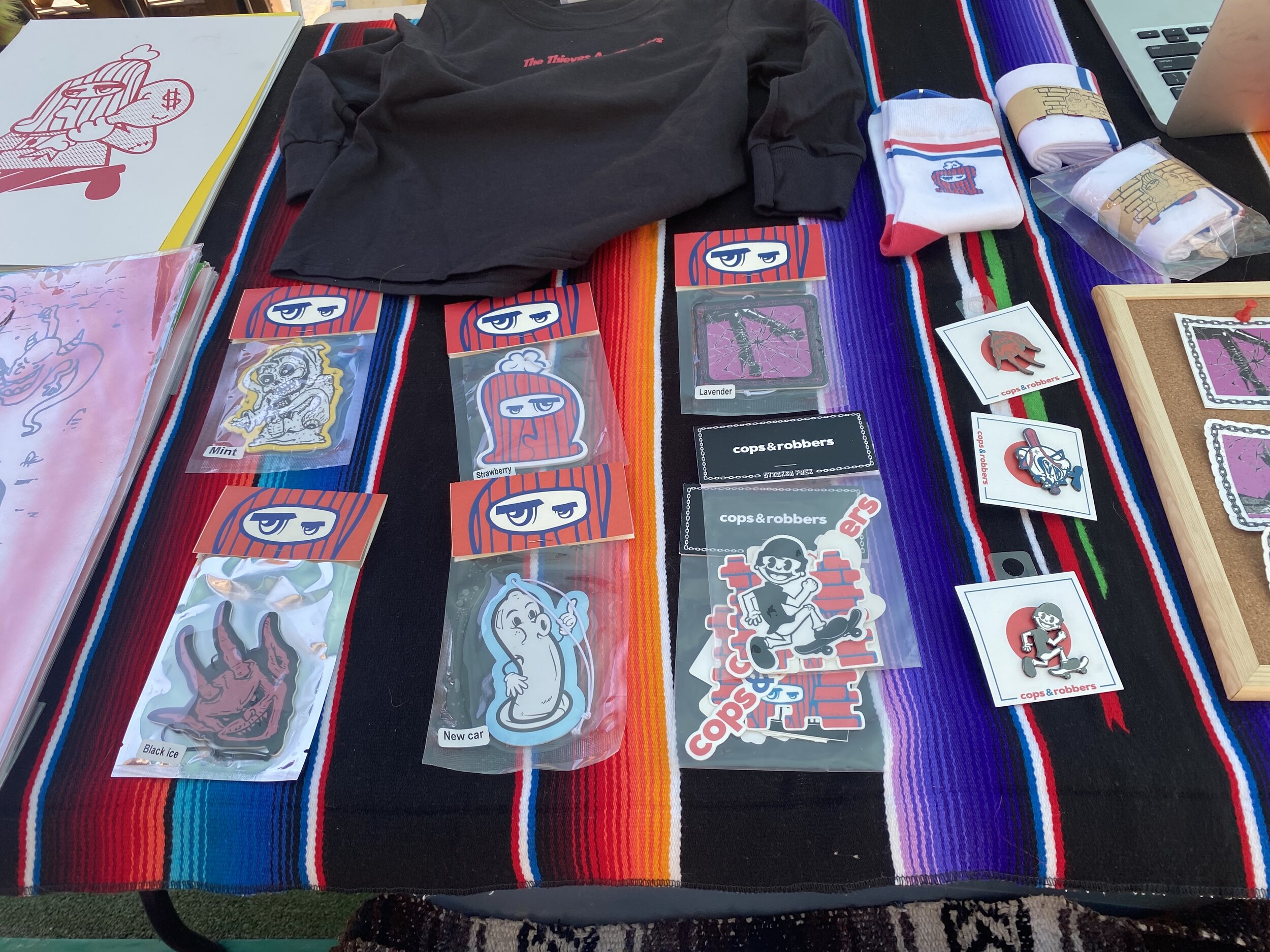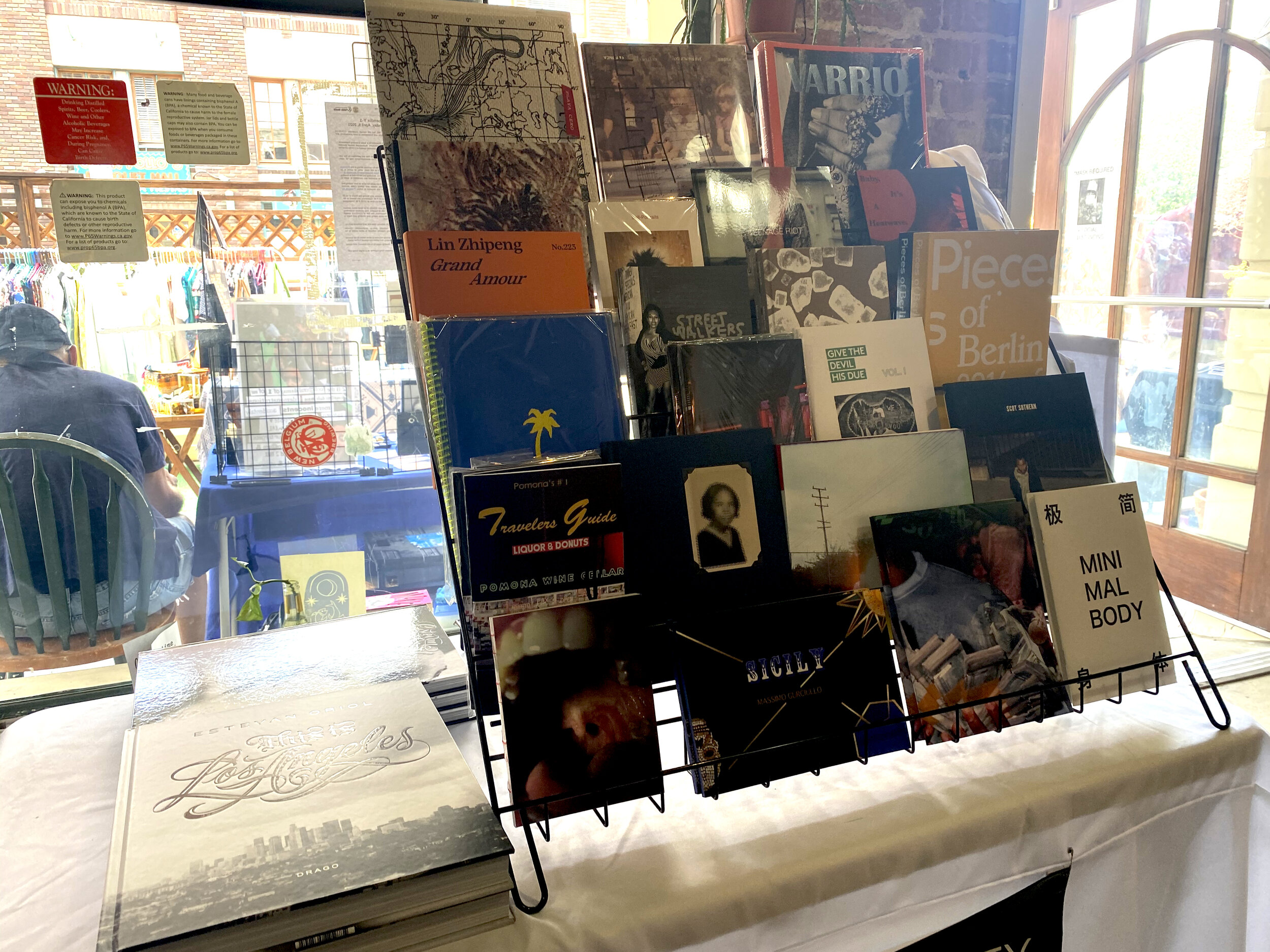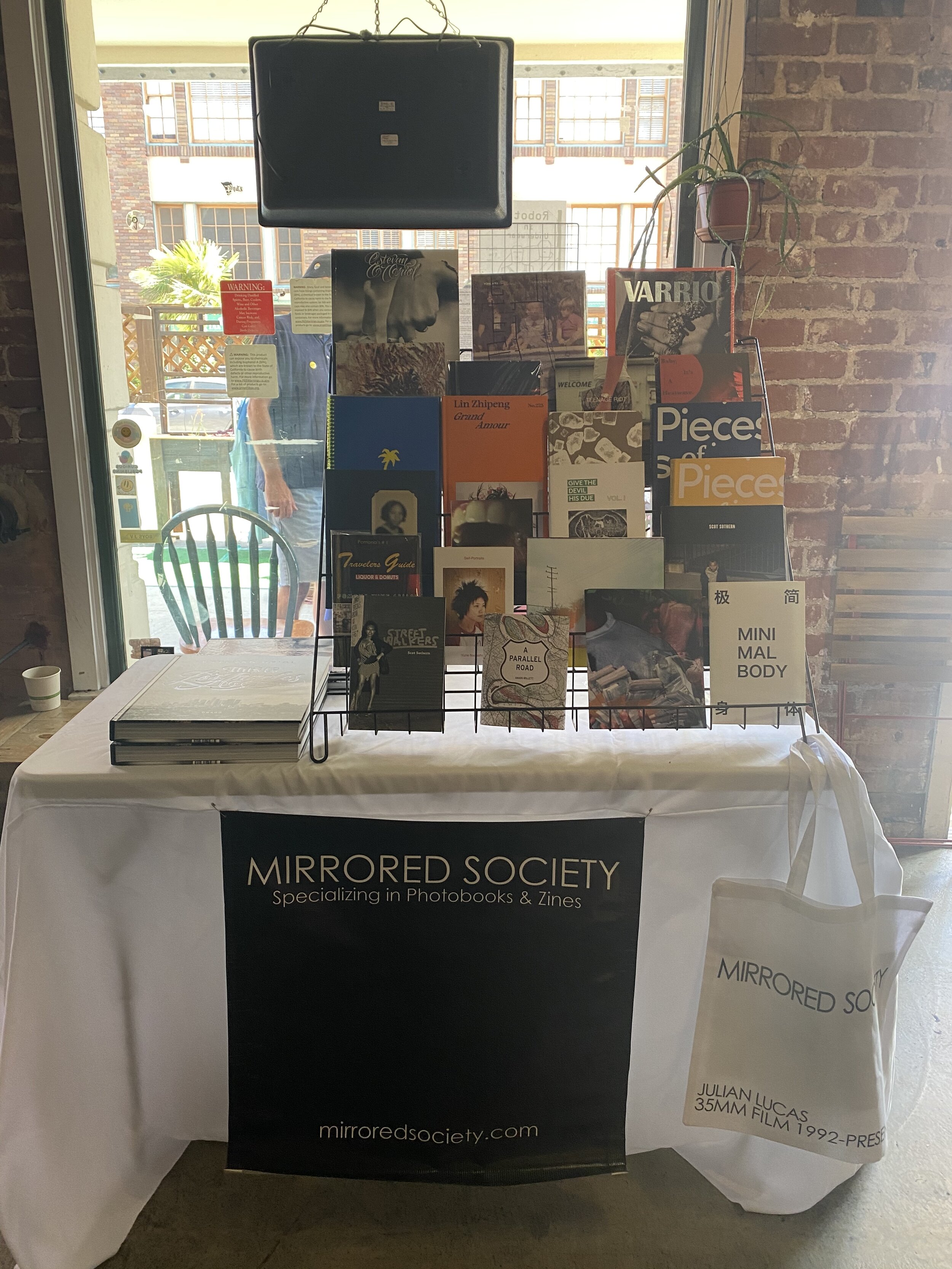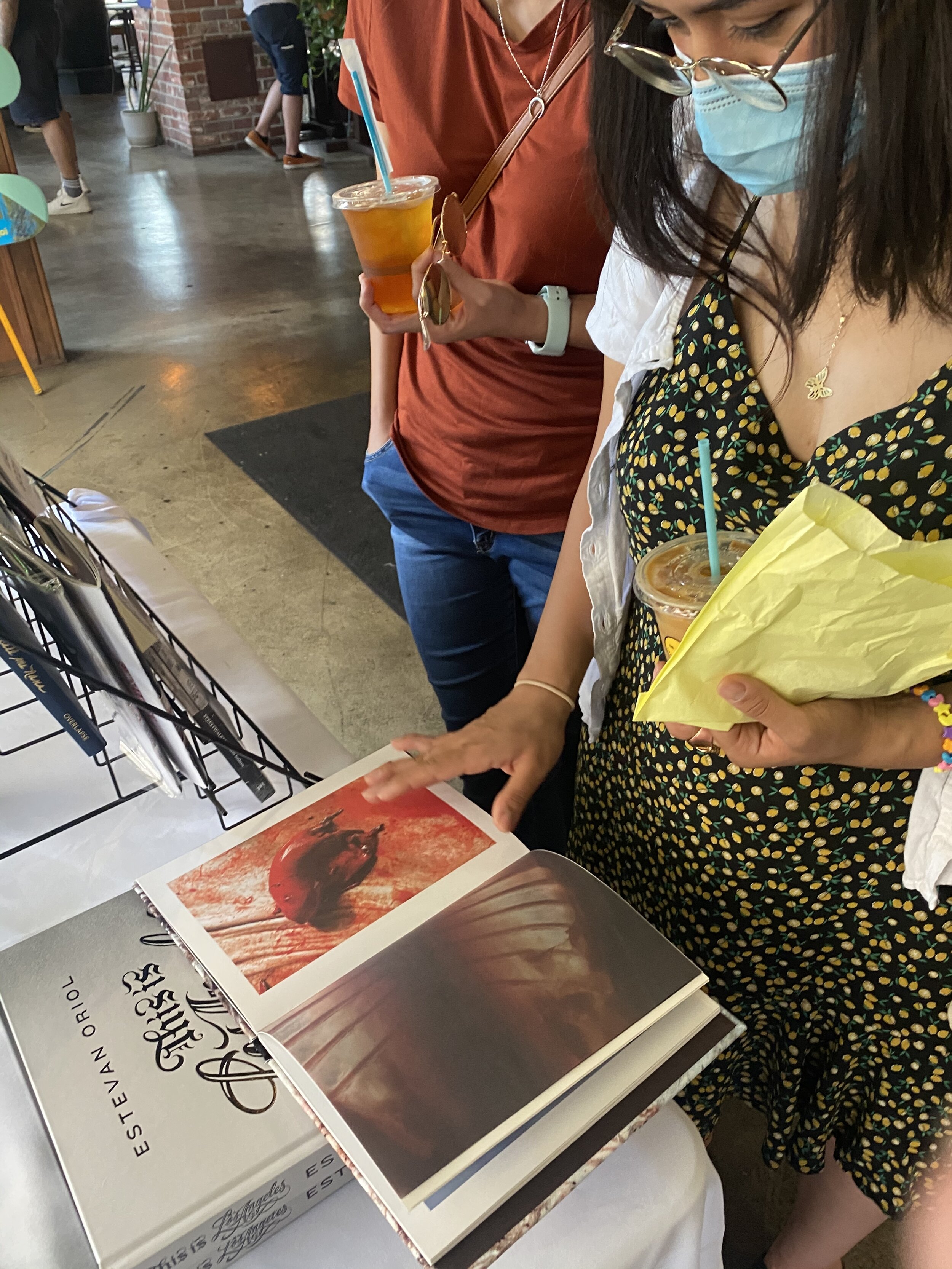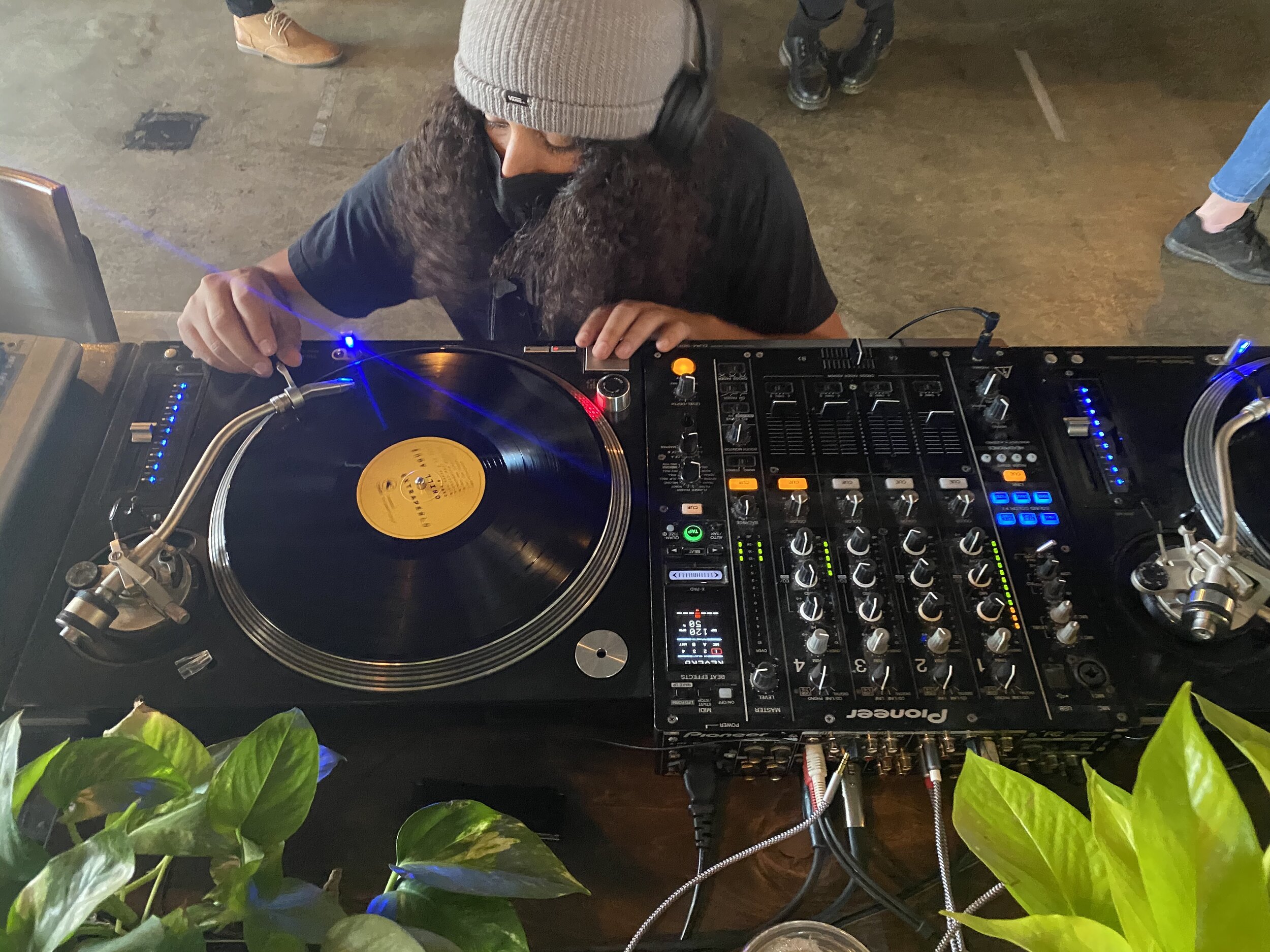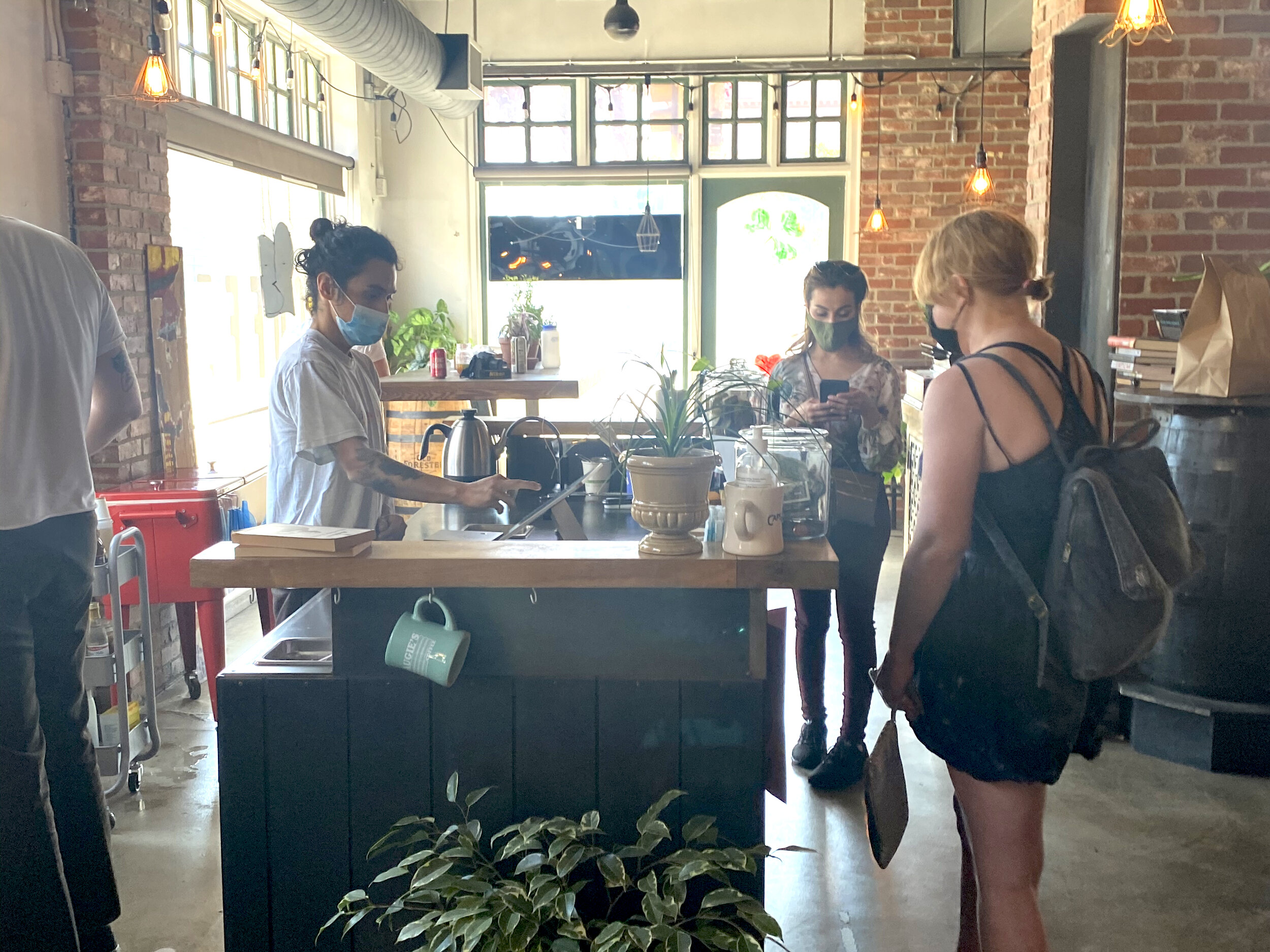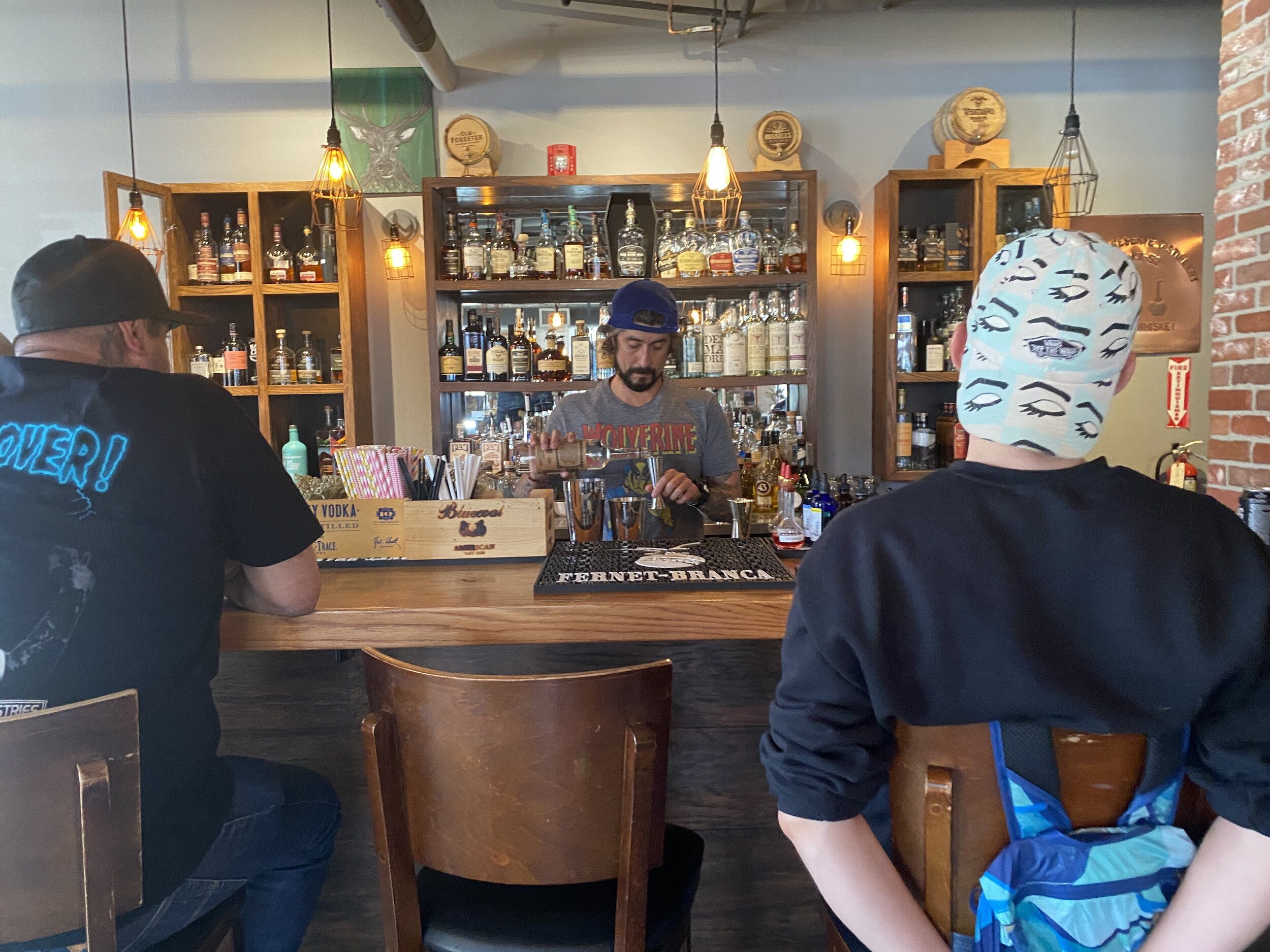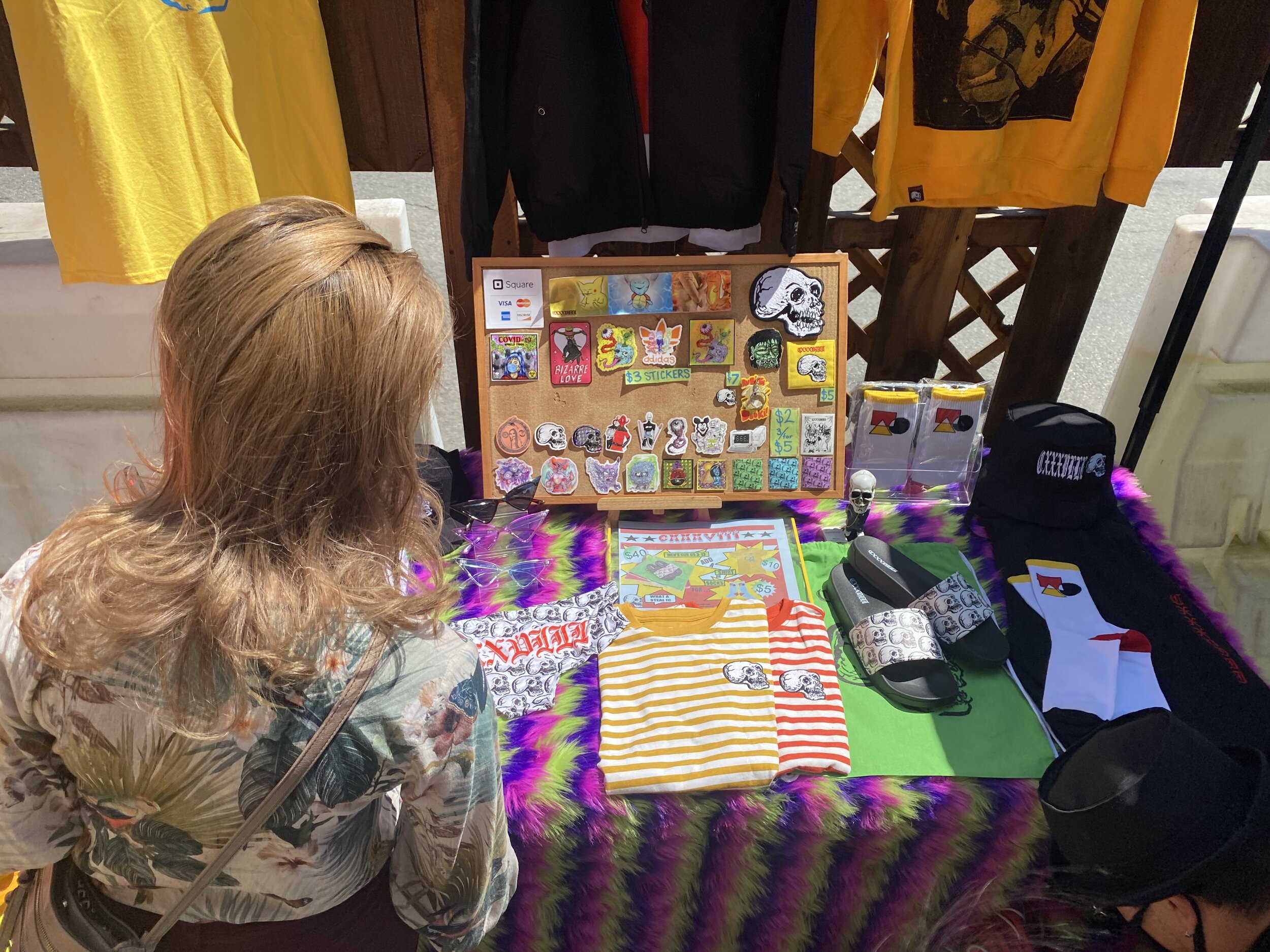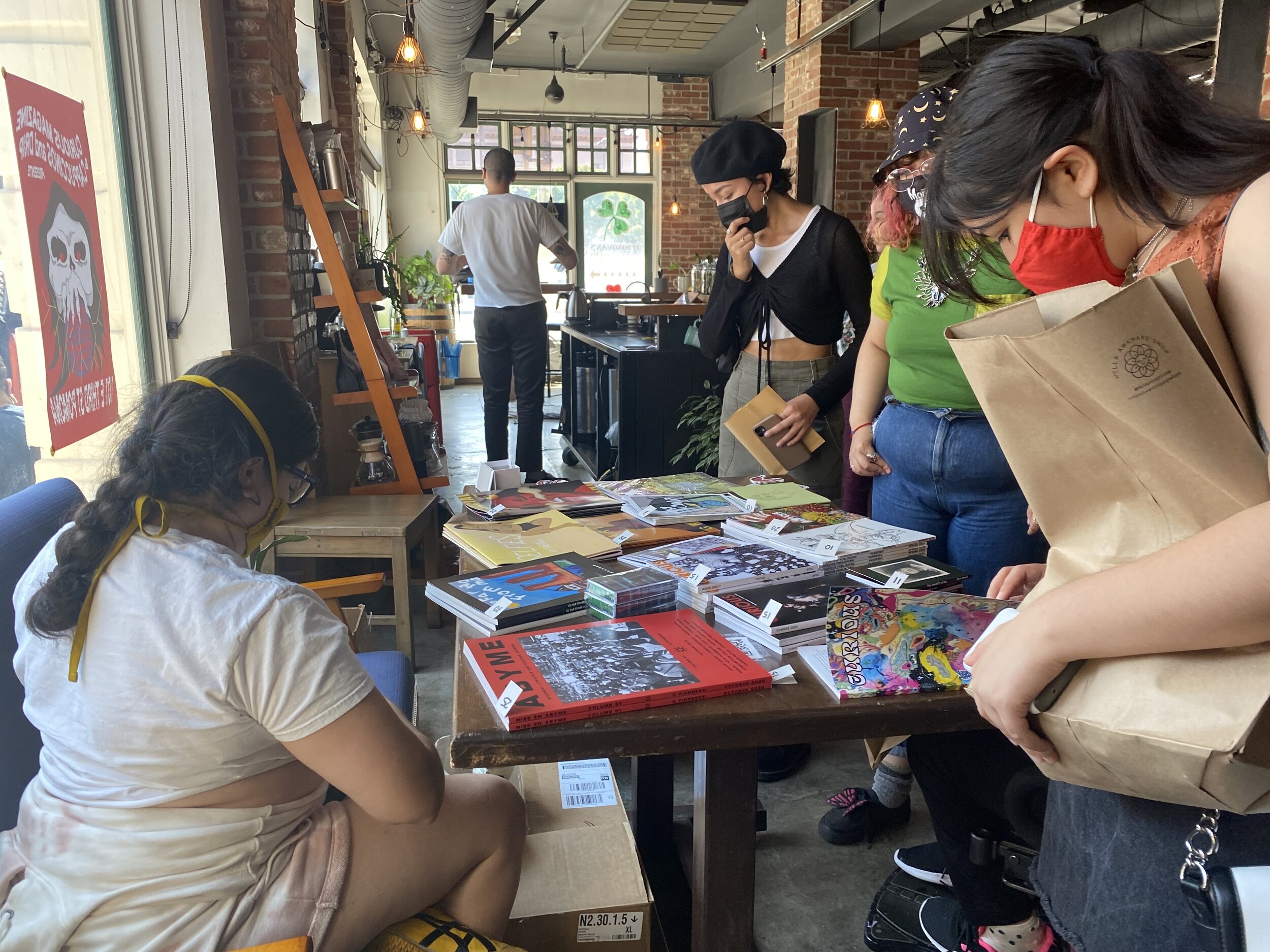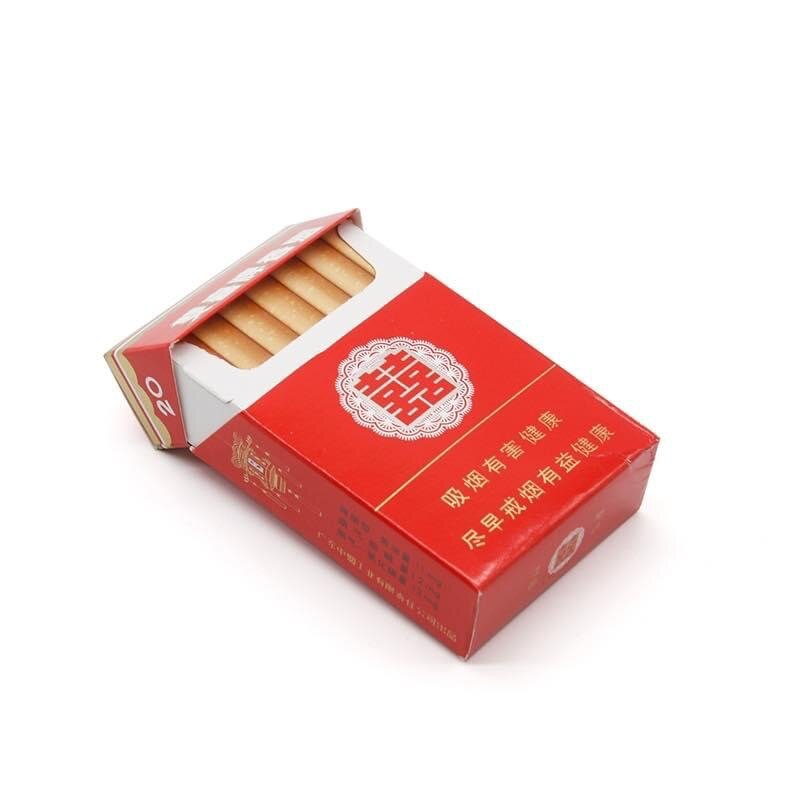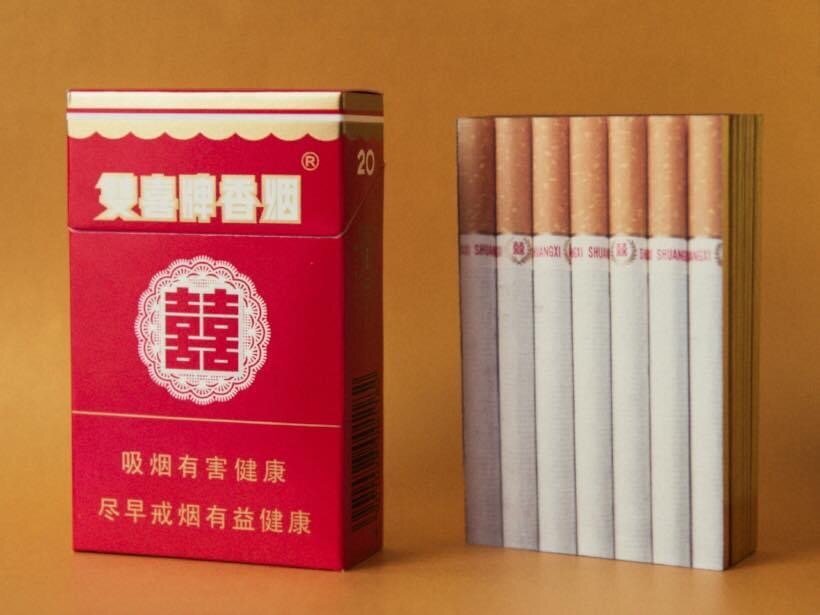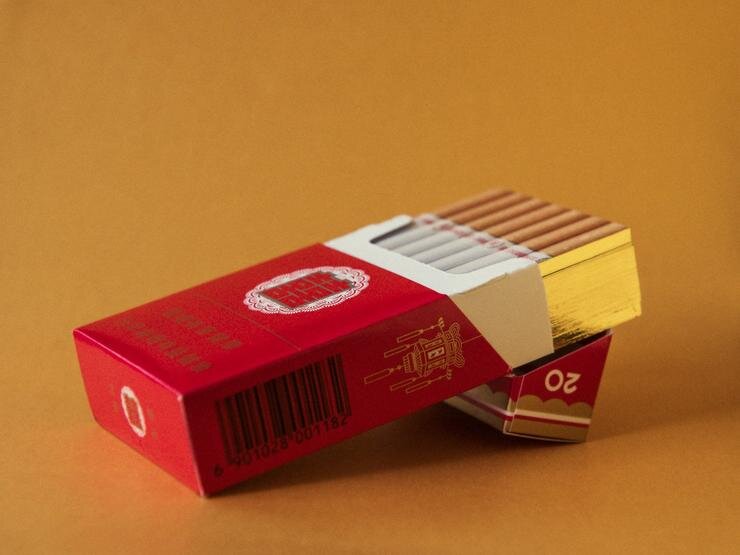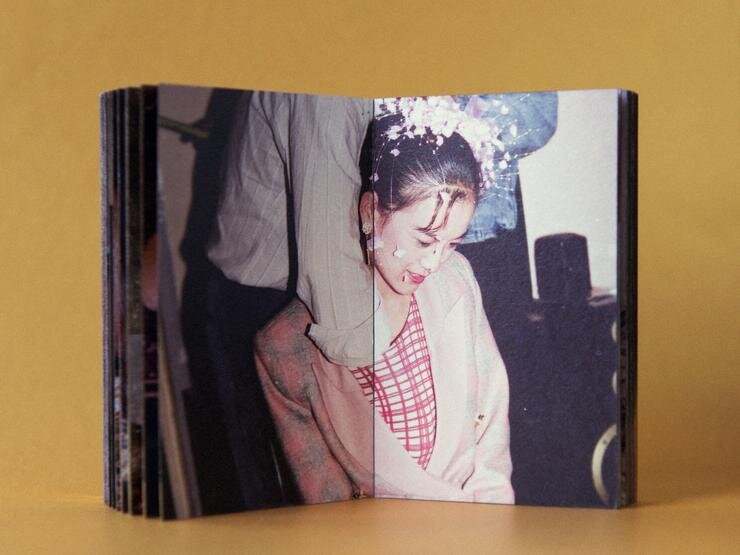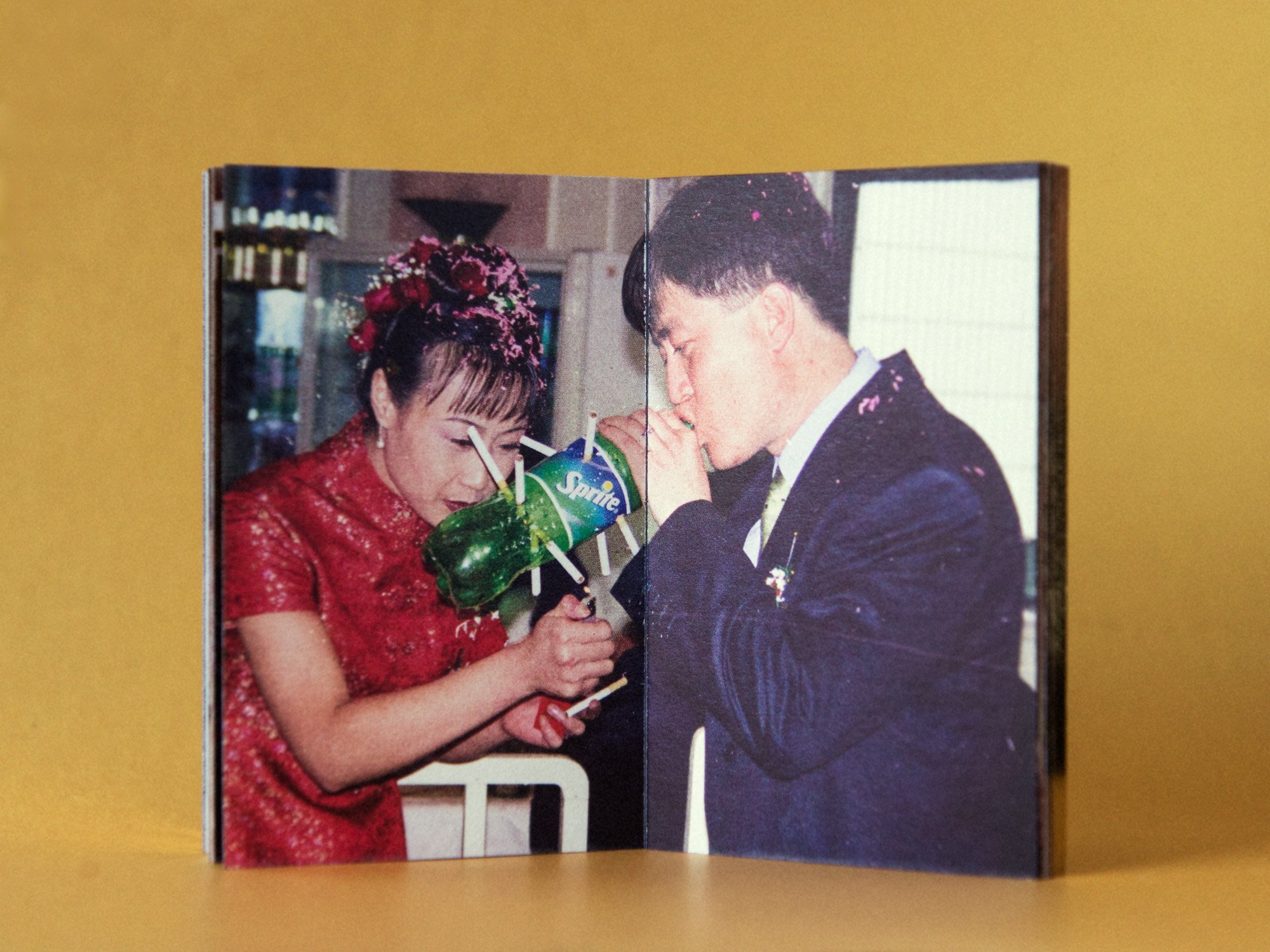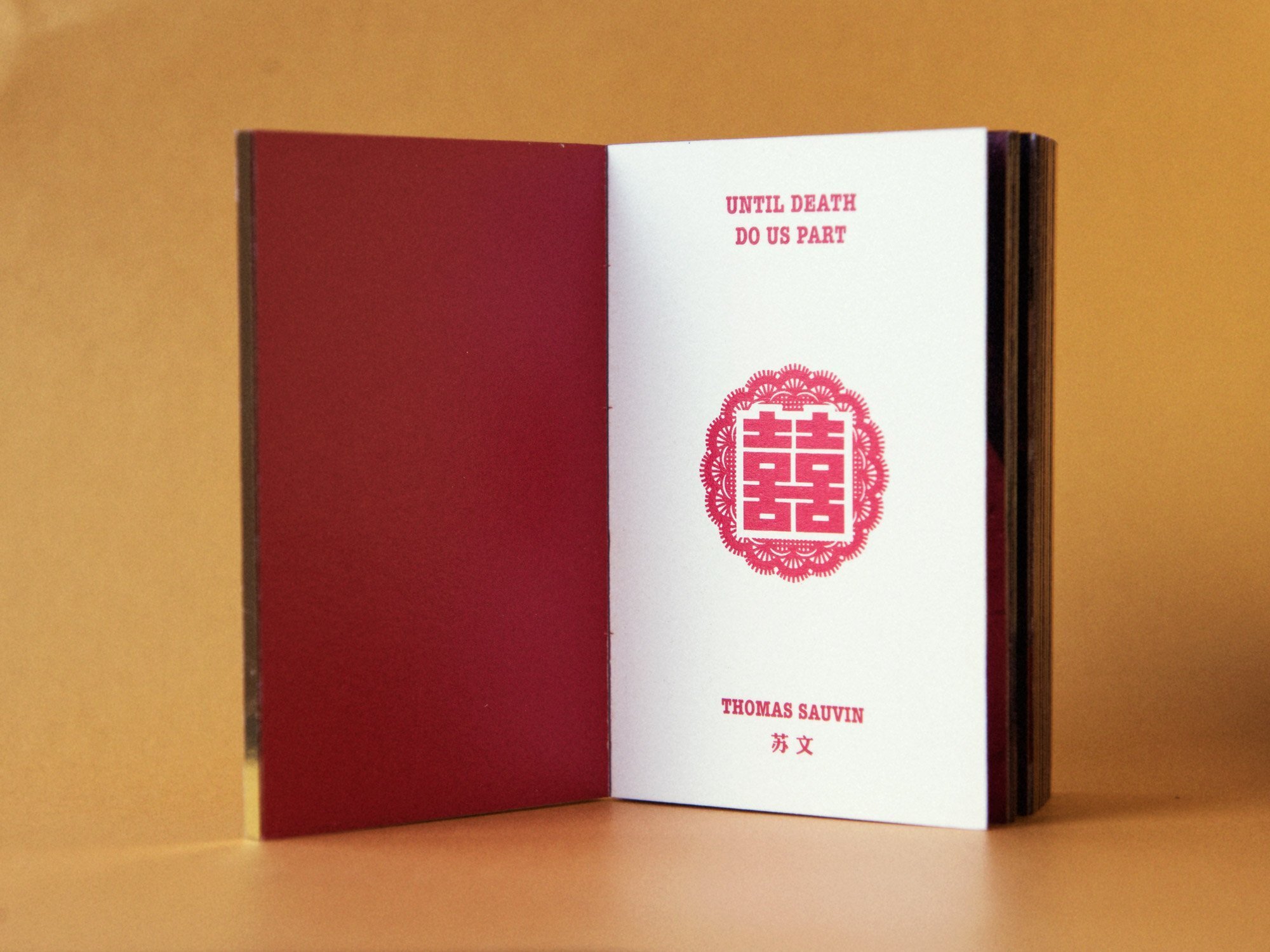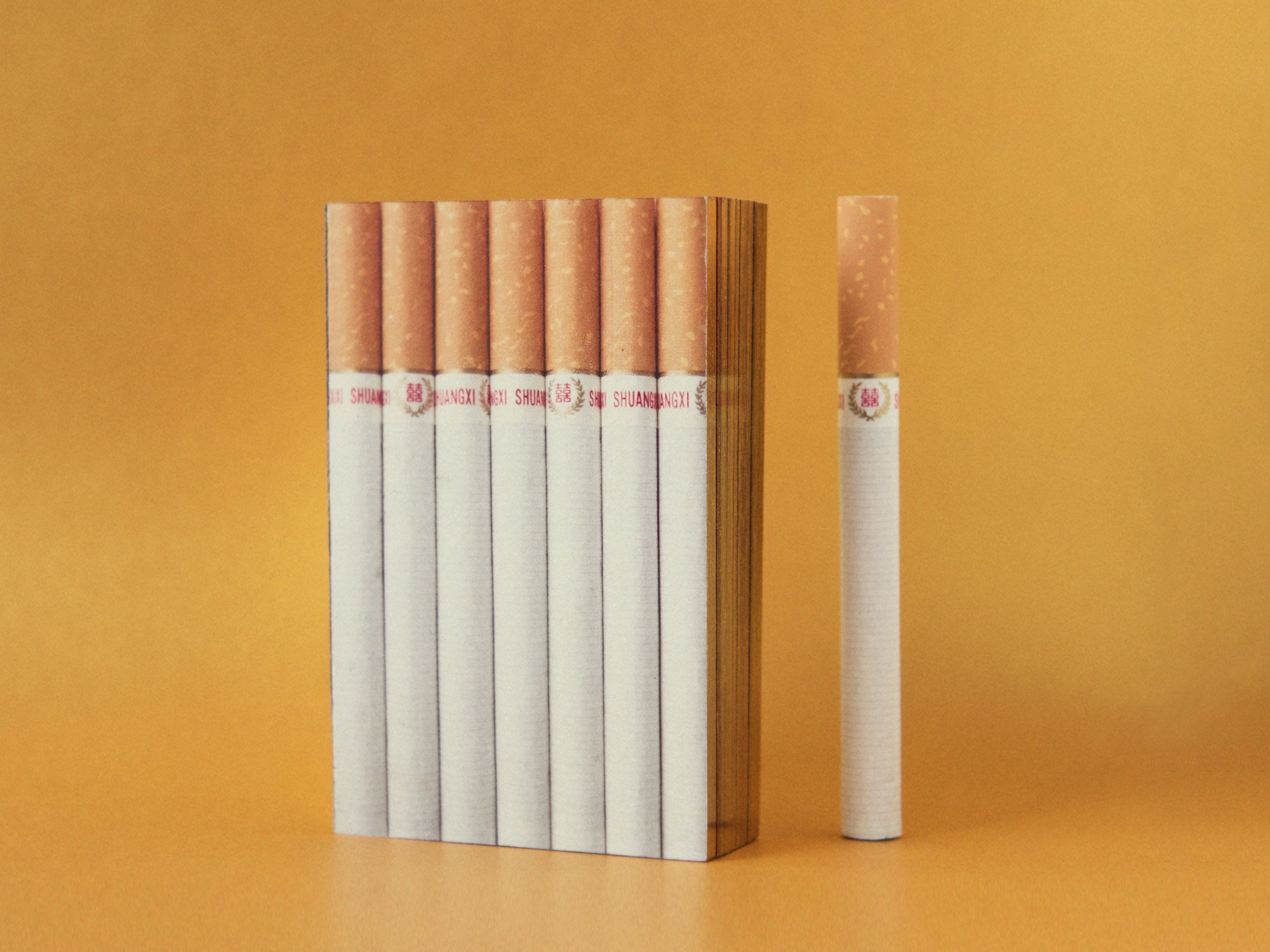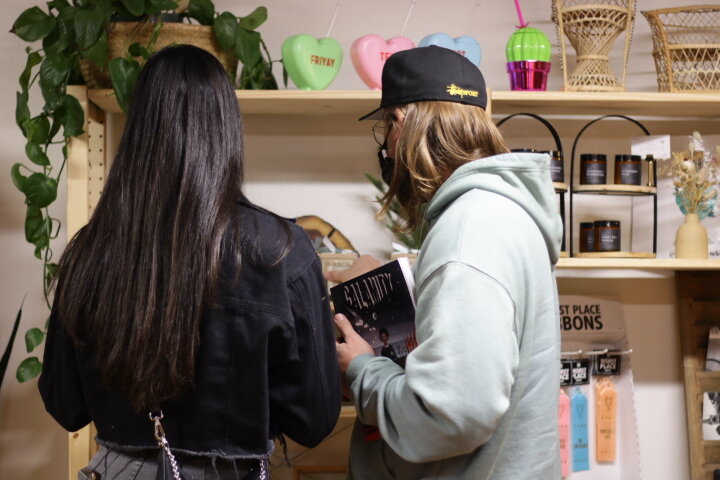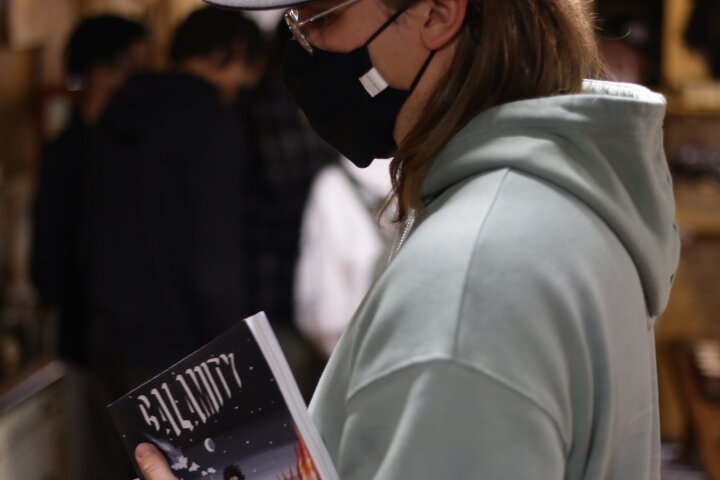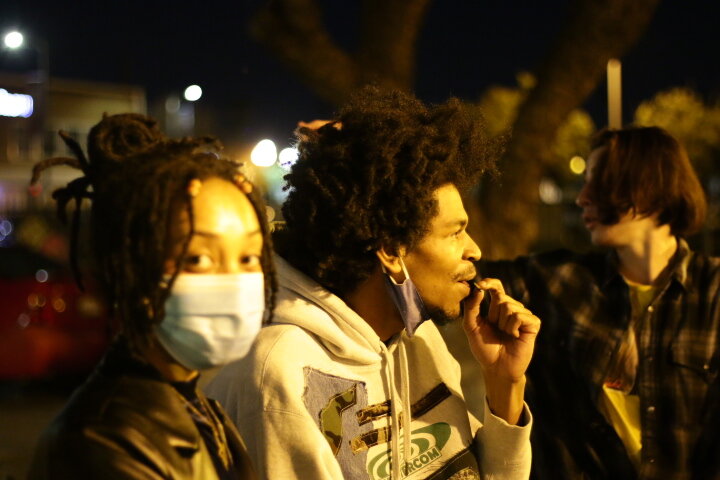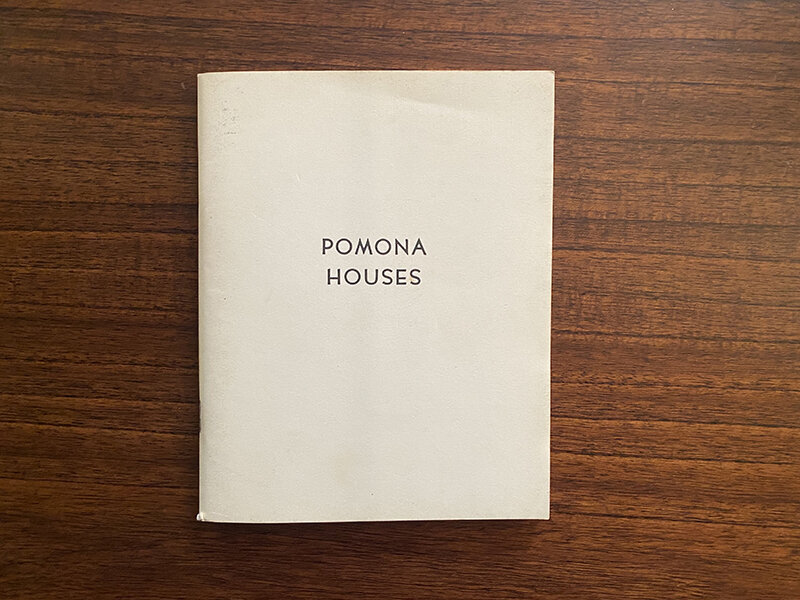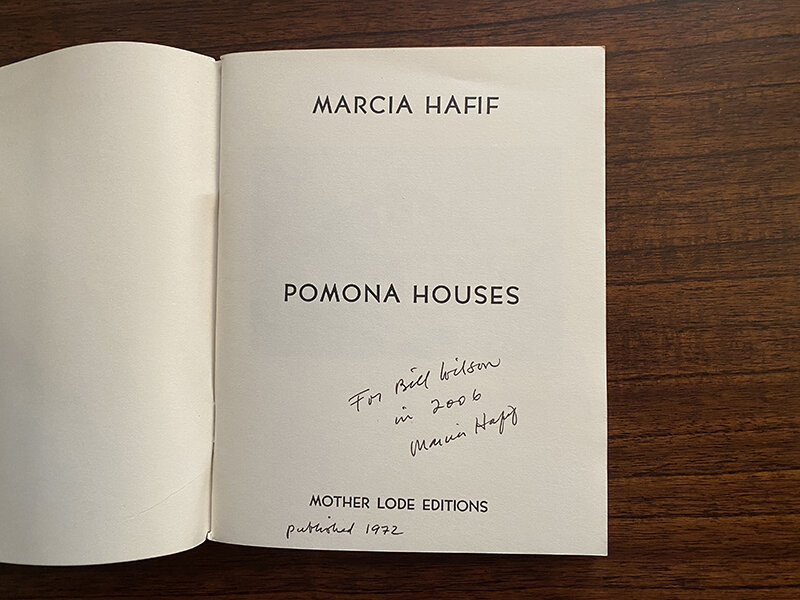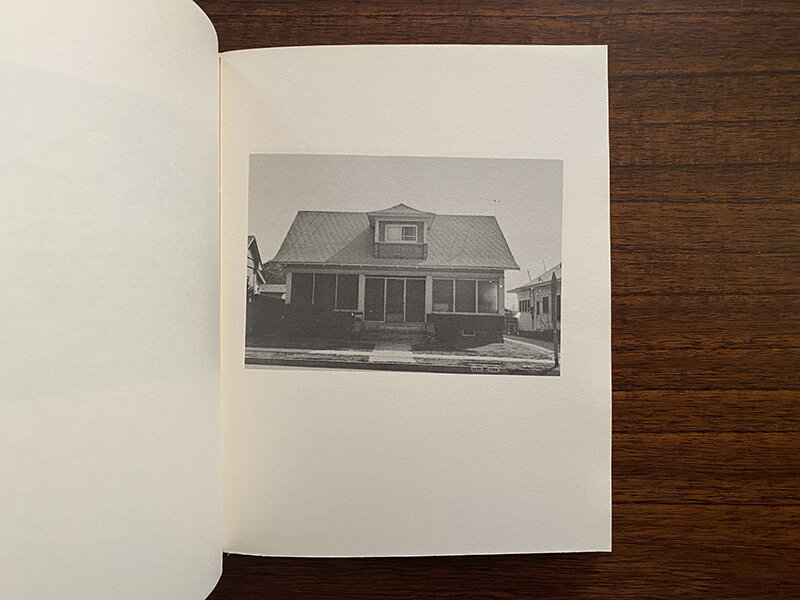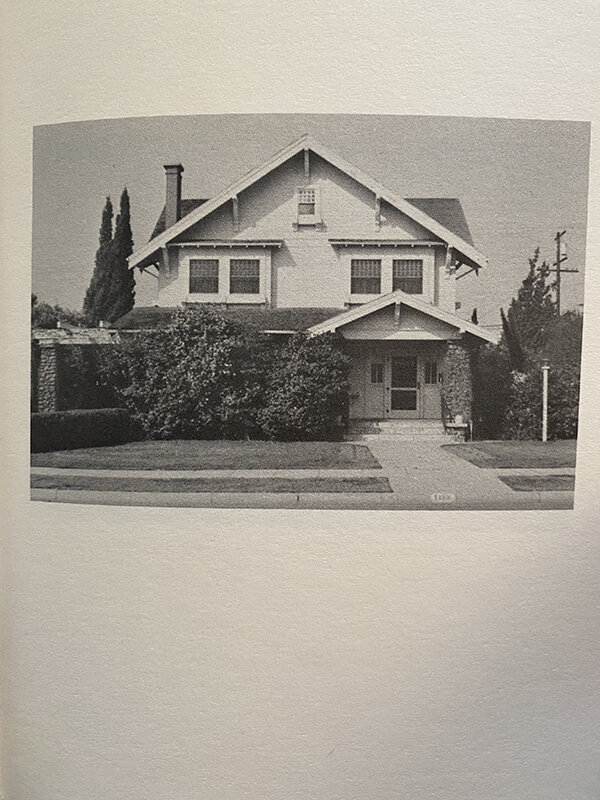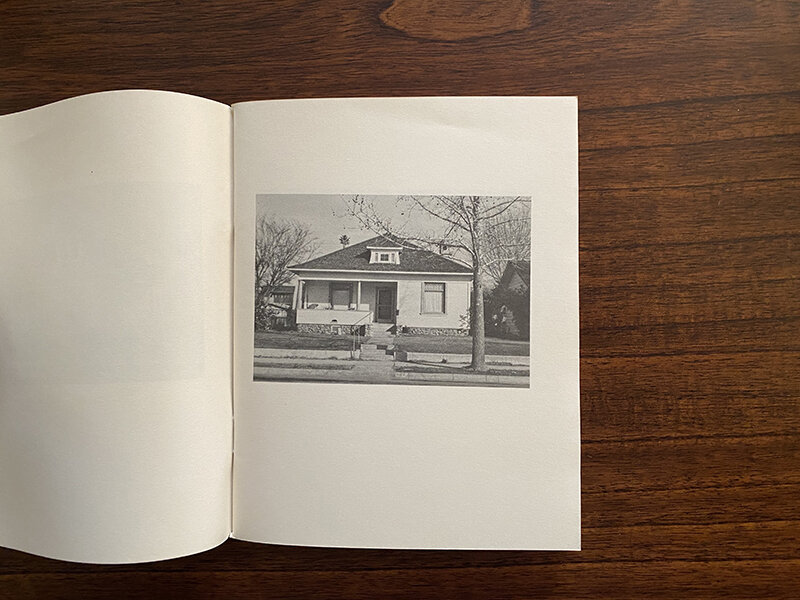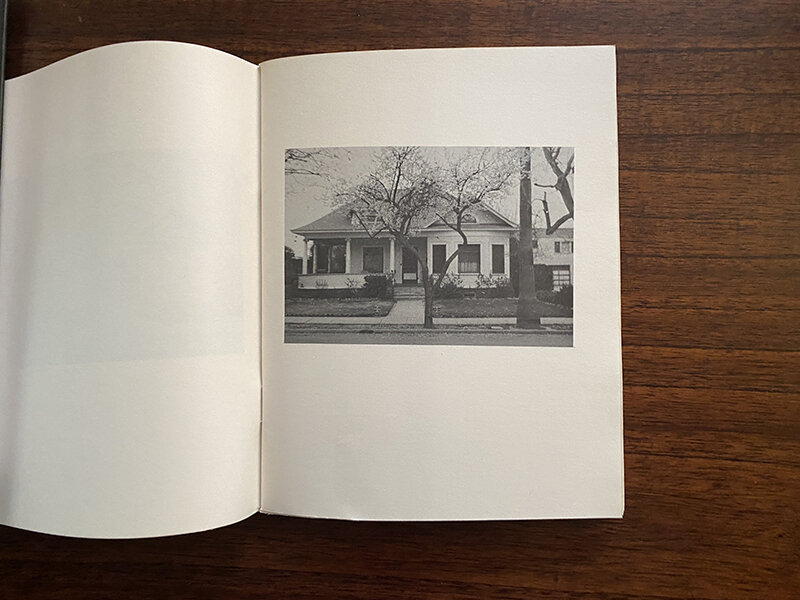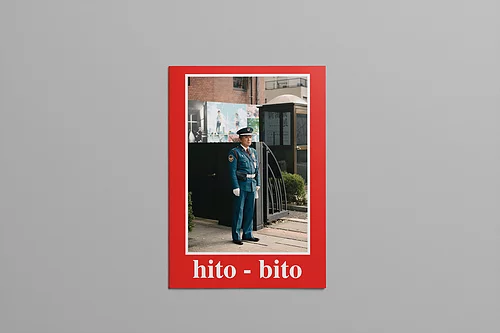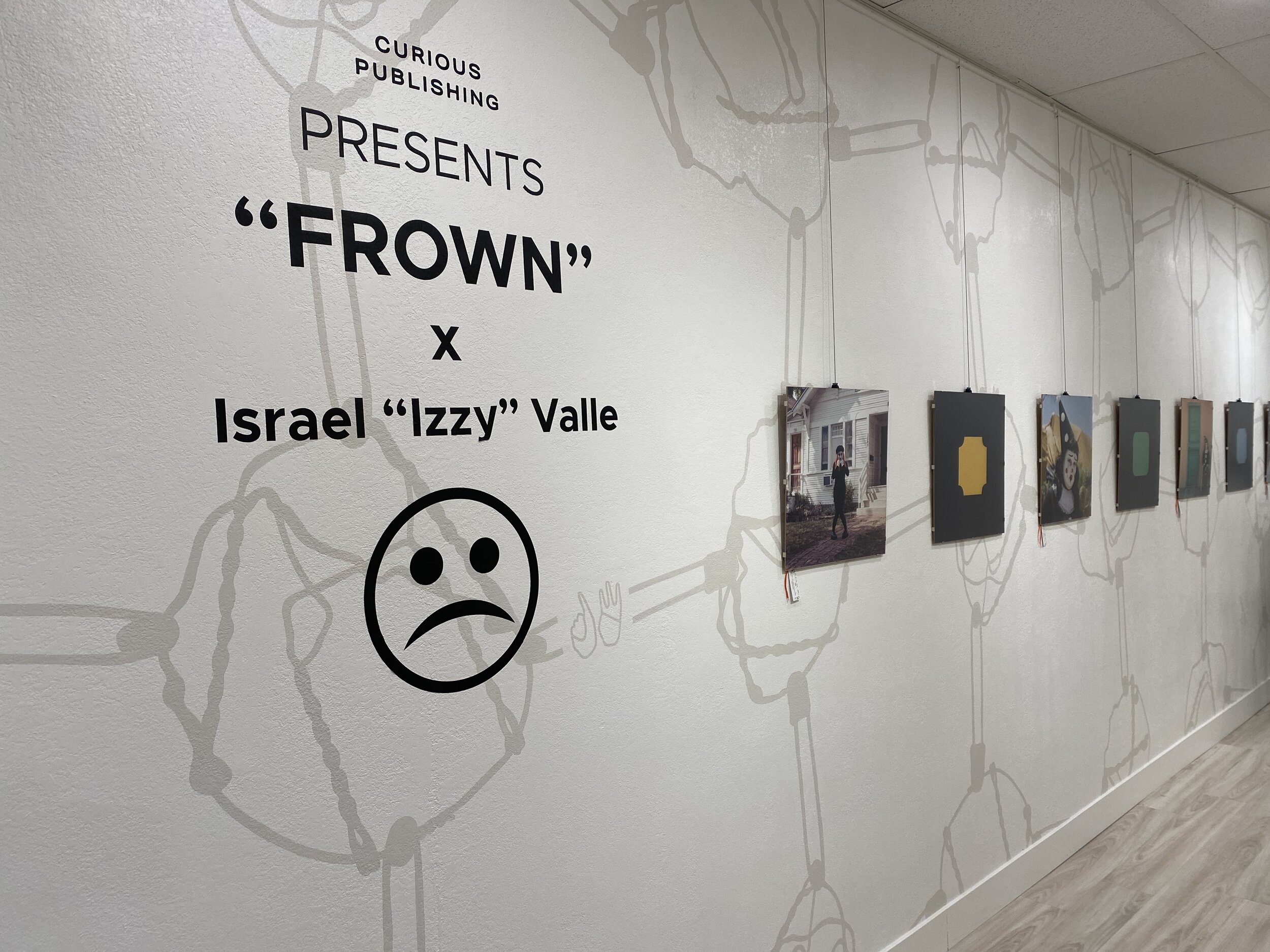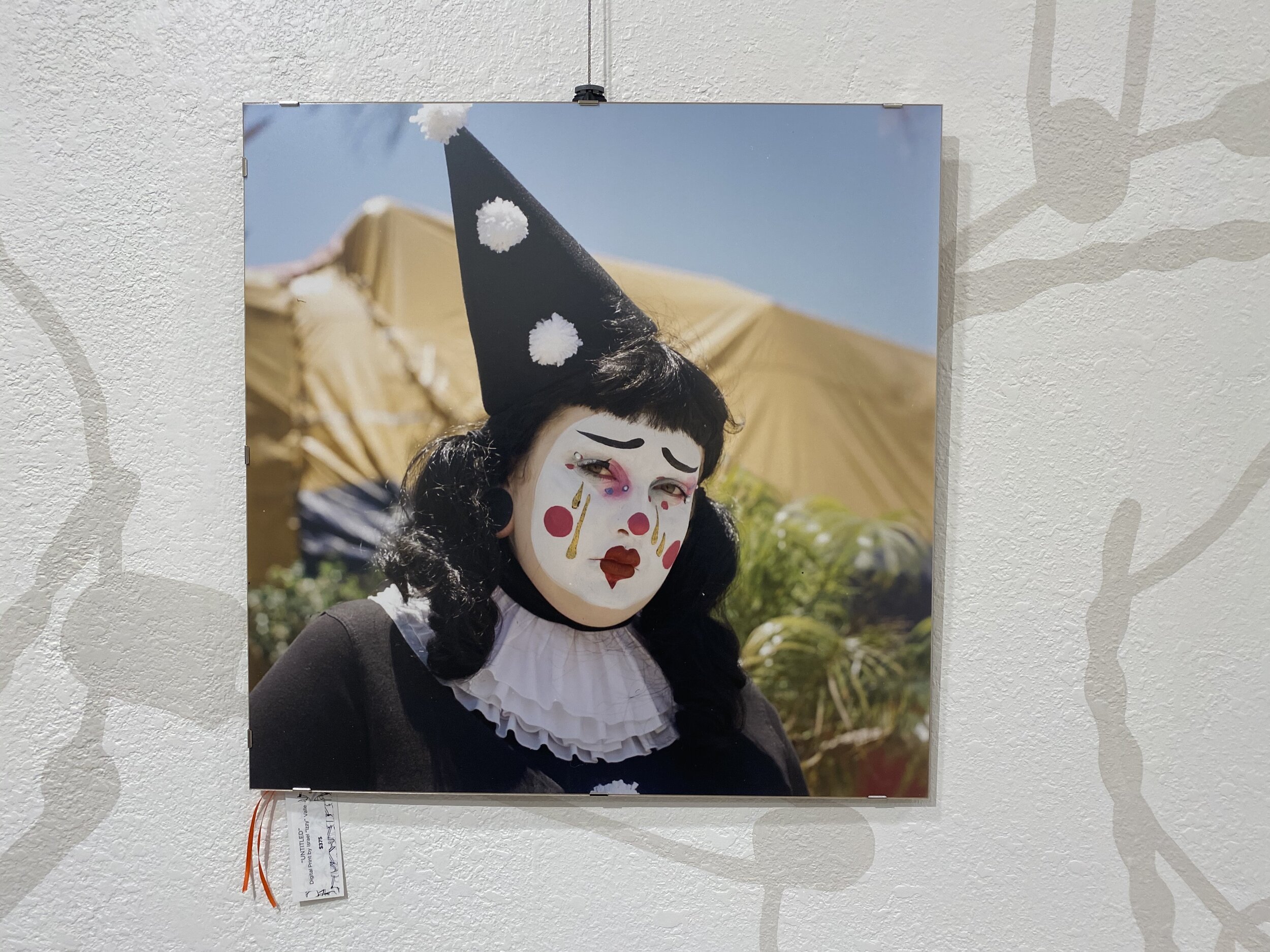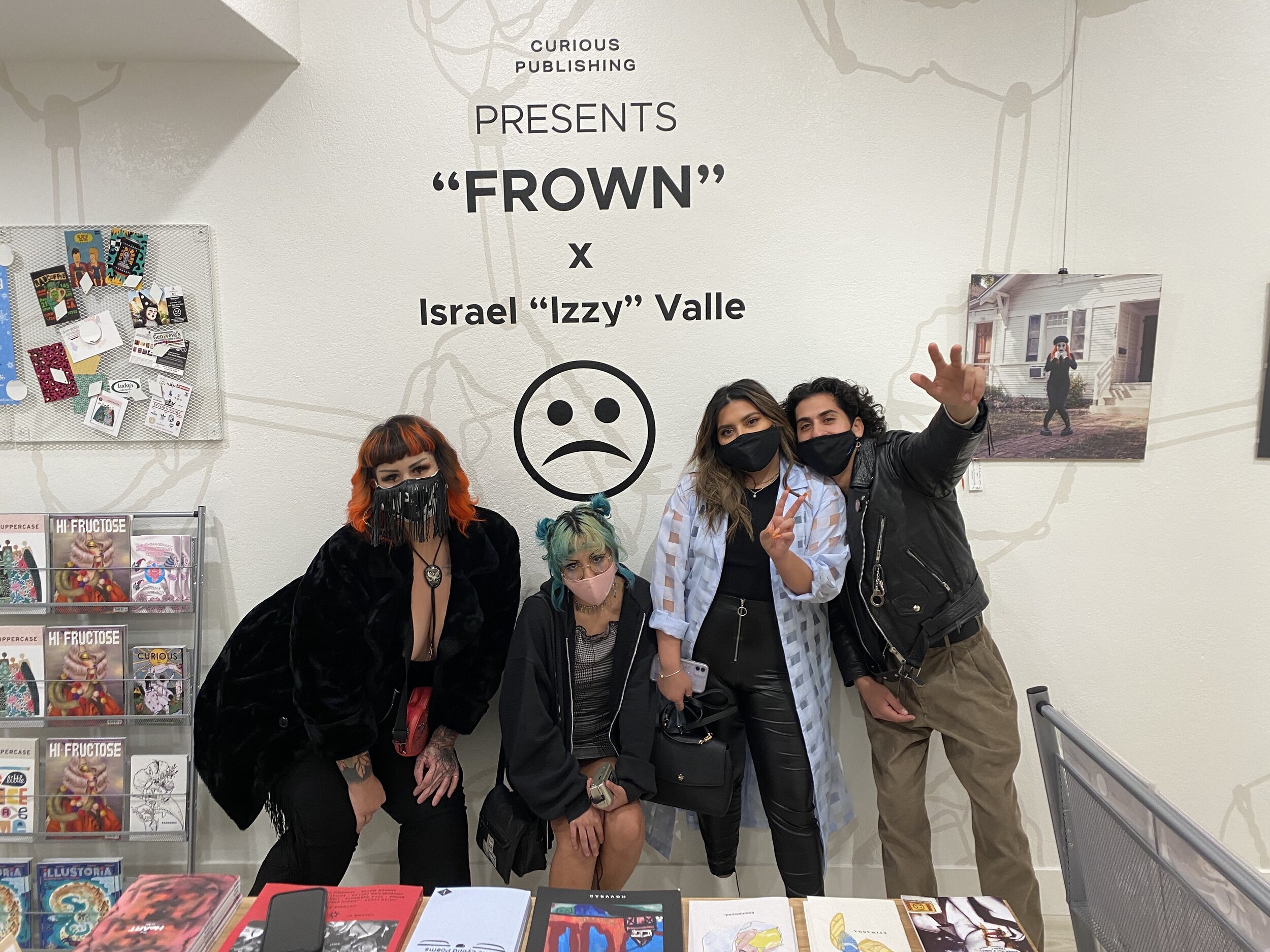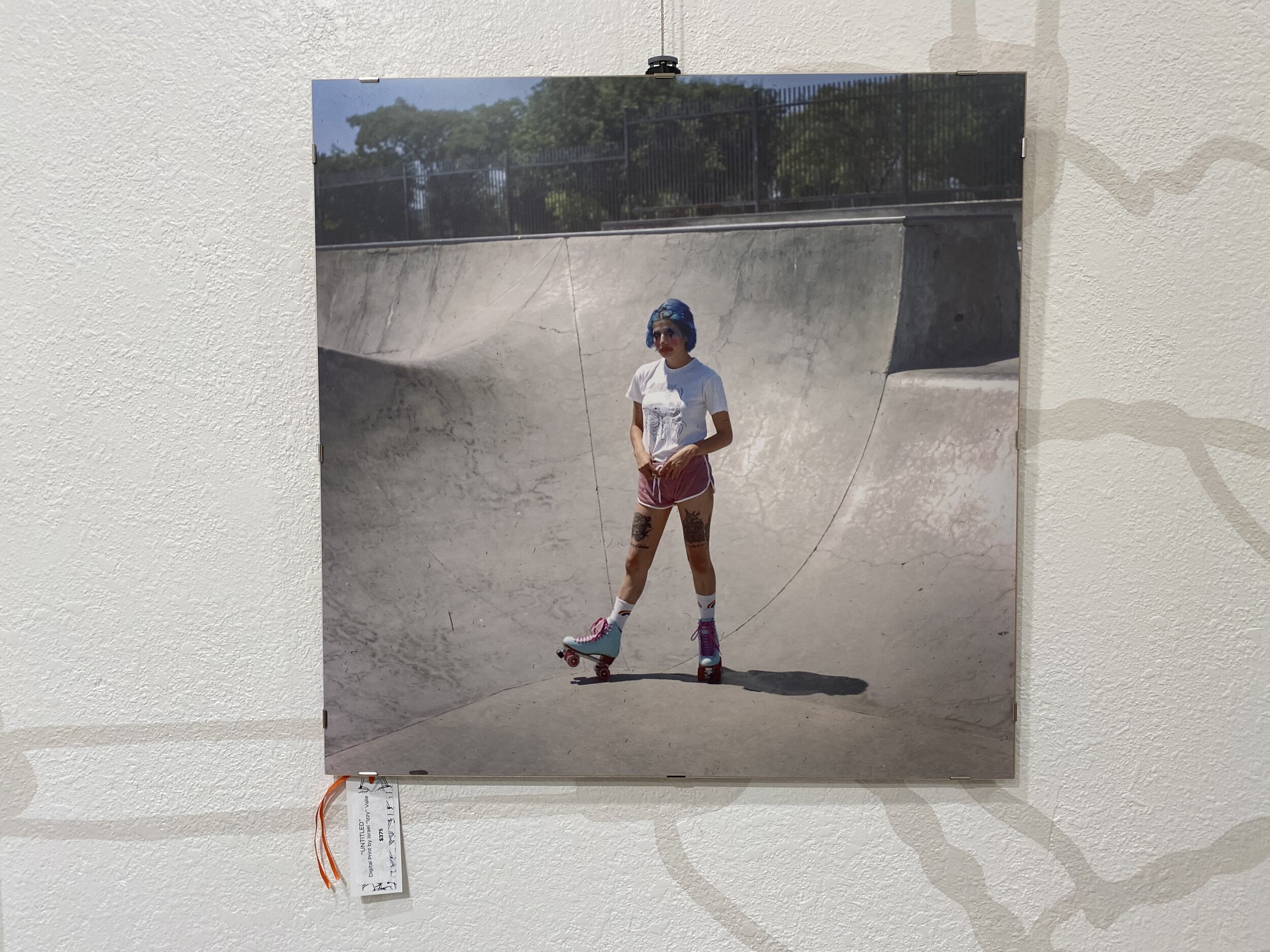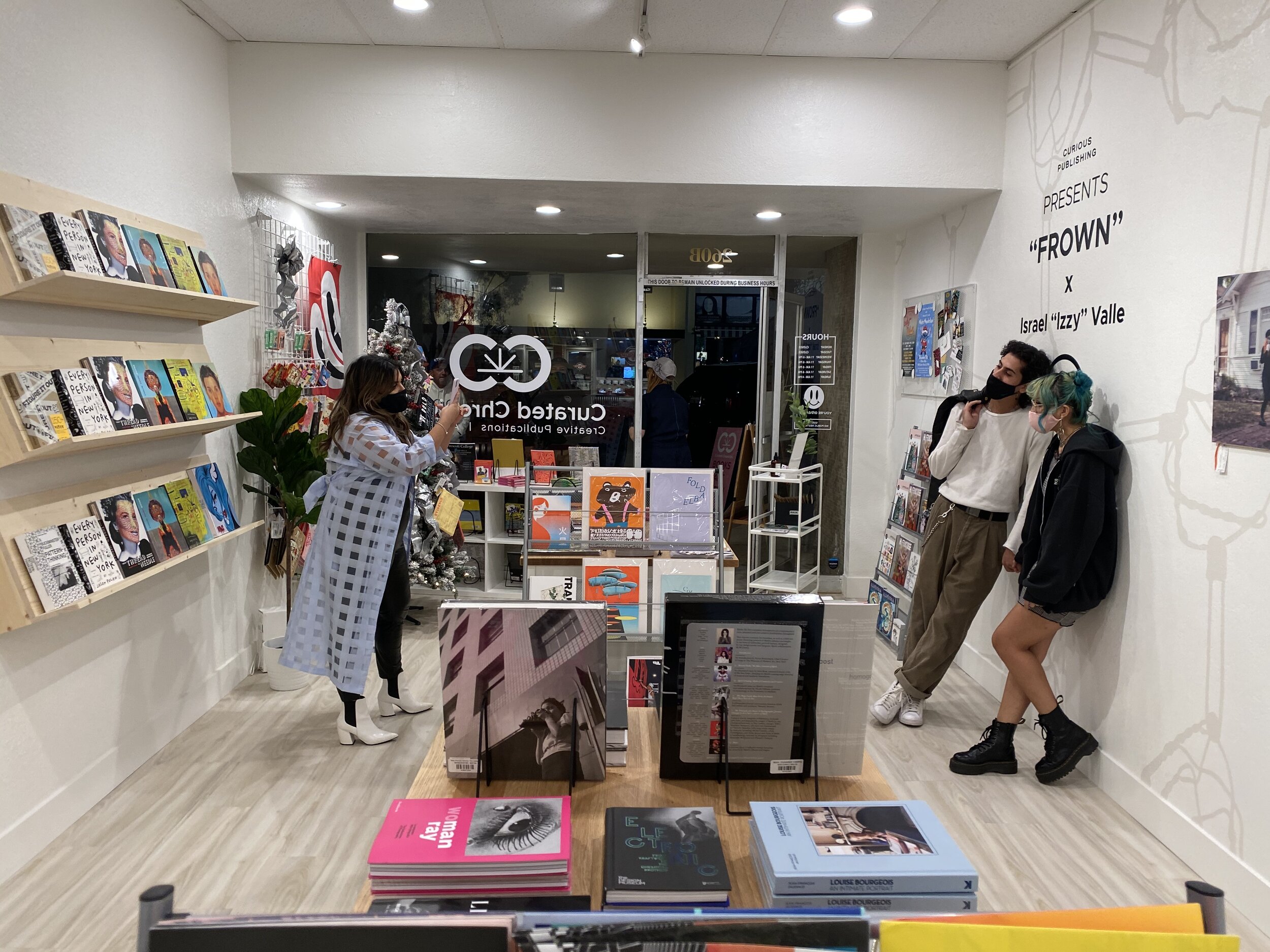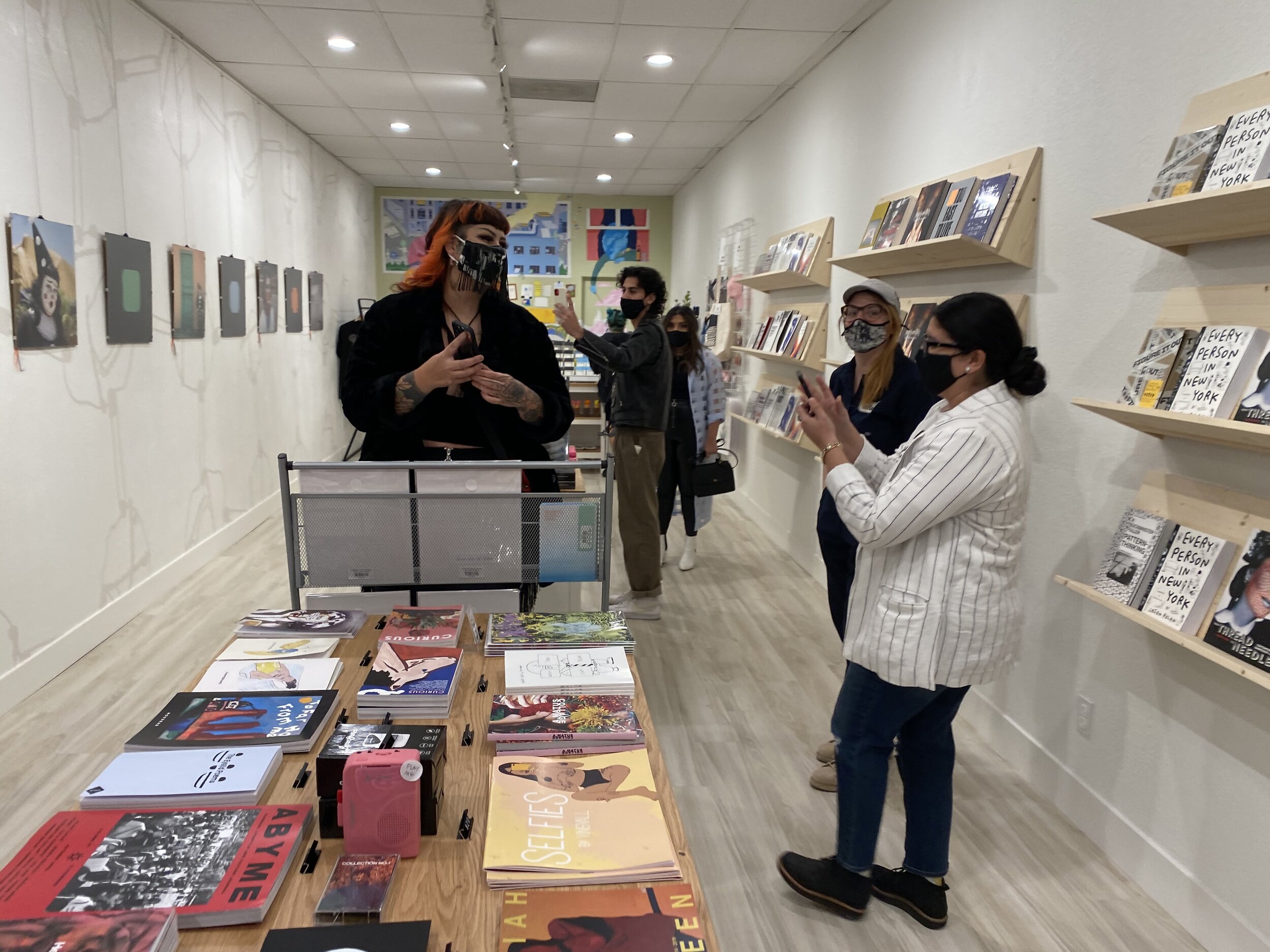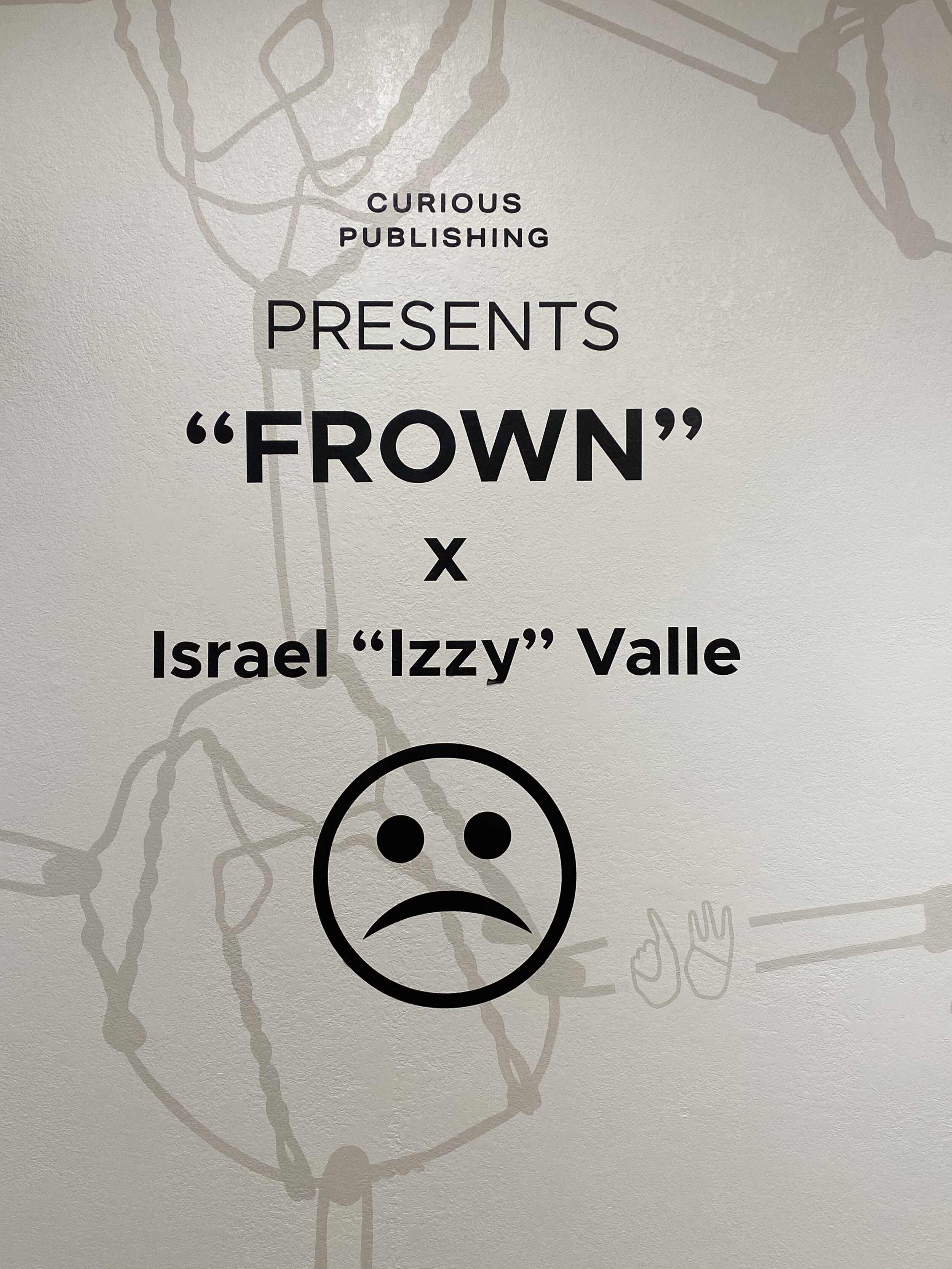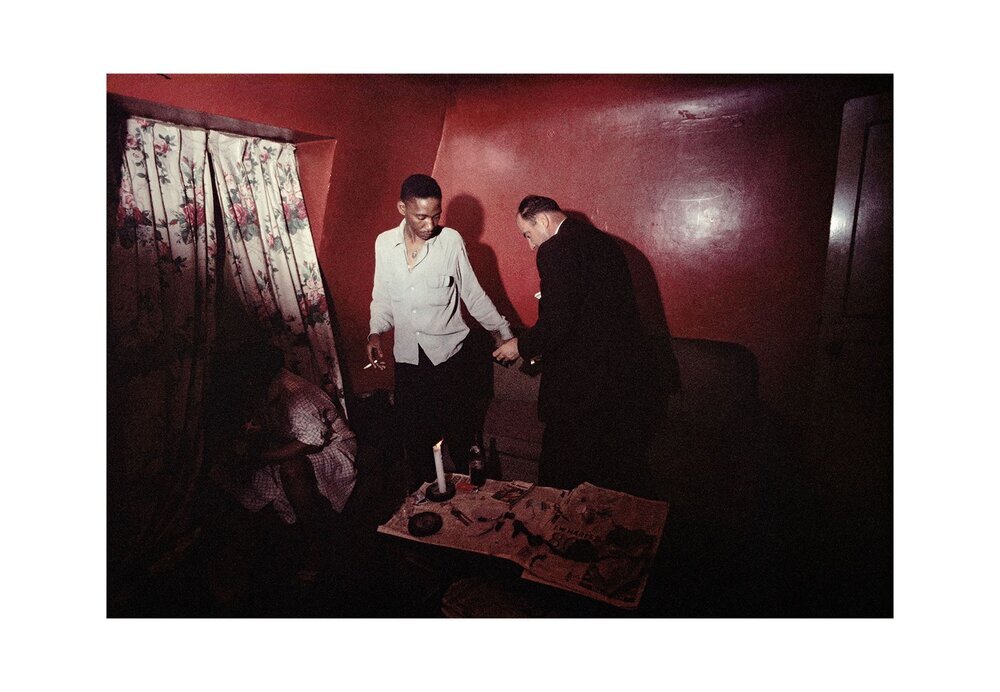Interview with Viviana Carlos - Sobre Adaptaciones
Interview by Julian Lucas
Published 9/28/2022 12:00 am PST
This Interview was Produced by Mirrored Society, A Bookstore on the Arts. The Pomonan is co-publishing this interview.
I met Viviana a few months ago at the Print Pomona Art Book Fair. She'd handed me a copy of her most recent book, 'Sobre Adaptaciones.' When I finally had an opportunity to sit down and look at it, I found myself delving further into the book and was blown away by the design, craftsmanship, and, most importantly, the meaning. I was curious about Viviana and what inspired her to create such a gorgeous book.
Can you tell us where you are from?
I am from the northern part of Mexico, Monterrey, Nuevo León.
Did you grow up in Monterrey, Nuevo León? Is there a art book scene there at all? Did Mexico influence your artistic journey?
Throughout my life, I grew up in many places, which is why most of my work addresses themes of uprooting and nomadism. If I had to recall my introduction to my artistic journey I would have to say that some of it came from my parents although they weren’t artists and were ordinary people. From a young age, my mother introduced me and my siblings to literature - especially fiction - and surrealism, our house was flooded with Frida Kahlo’s remarkable work (it wasn’t as much of a cliché back then) on the other hand my father was fascinated by historical books.
As far as the artbook scene, around 2013 I remember having the itch of using the book or fanzine as a narrative vehicle when I was attending college in Guanajuato, some of my friends back then created fanzines, and then later on I gradually gained courage and started my own projects. Another life influence is that when I moved to the US I spent hours at public and university libraries looking at photo books. However, a big influence on the book art scene I would say came from attending an art residency in Oaxaca in 2020 and meeting Rigoberto Diaz Julian and his practice. I was able to land my concerns about image and text and its possibilities within the book form thanks to talking and collaborating with him. He is the co-editor of this book.
I do think Monterrey has an art book scene but I can’t say from experience since I have not resided there in a long time. Although the project Miradas al Foto Libro led by Celeste Alba Iris has brought to light many enthusiasts and professionals of the artbook scene from many cities in the northern and central part of Mexico.
“Self publications are a tool and narrative vehicle that can help to approach very complex topics such as mental health, grief, and trauma.“
What are your accomplishments that have led to your book?
Self-publishing the book was an accomplishment in itself. I was able to exhibit it here in San Francisco at the end of 2021 and also at the Print Pomona Art Book Fair early this spring. I was interested in collaborating with other professionals in the process of making a publication. I worked with experienced designers, bookbinders, printmakers, and conceptual thinkers. The most recent accomplishment for the book was to create an exhibition from it. I enjoy exploring the idea of taking the book outside its formal form. The exhibition space allows to amplify the possibilities of reading an artists’ book. The book saw its beginning thanks to a workshop I took with Eunice Adorno during the summer of 2020 thanks to the cultural project Miradas al Foto Libro led by the artist and writer Celeste Alba Iris. This is the first time I get the chance to design an exhibition from an artist’s book. I am very happy and grateful for the results and the opportunity. The exhibition is up until November 6 at el Centro de las Artes in San Luis Potosí, México.
What have you learned about your book? What have you learned about yourself while creating the book?
It has errors, but I welcome them. Self publications are a tool and narrative vehicle that can help to approach very complex topics such as mental health, grief, and trauma. Talking especially about trauma can be misleading. I choose to see trauma as a power source to heal. I’ve learned how to harness it in my own work instead of ignoring it or building a stigma around it. Trauma and its representation can be weakening and that only prevents people from healing. There is no shame in healing.
First of all, that knowledge should be accessible to everyone, everywhere. While thinking about the book conceptually, I had access to educational and research tools that I’d never had access to before thanks to the place I worked in. I made this book primarily relying on public archive databases and accessing information freely. Now, I have a different relationship with what intellectual property is or how free culture means and functions. An idea is a precious thing and we are allowed to keep them to ourselves if we decide to. I was one of those persons that held an idea as a treasure but then I asked myself what would happen if I let go and share it. However, I believe that intellectual labor, especially from women need to be rewarded and recognized to avoid following uncomfortable terms and discussions around bropriating. But in the midst of defining that and opening a dialogue of having fair play for everyone and their intellectual labor, this book helped me to cultivate and share a single idea working with other people’s social and collaborative dynamics. The idea branched. I saw its expansiveness and it was beautiful.
Your work seems to lean towards education as well artistic, was this intentional?
No, but it was inevitable. In the process of elaborating on this artist's book, I combined two things: my personal experience with labor and imagination. If art means expression, then this book’s intention was to speak from a personal voice in how I survived a period of acute grief and how poetry, the city’s nature, and imagination helped me to survive and take care of my mental health due to a PSTD.
My approach to working with public domain and archival images for this artist's book was because I worked as a cataloguer in a historical photographic archive. The repetitive duties I performed there such as seeing, organizing, and cataloging hundreds (sometimes thousands) of images daily in front of a monitor influenced without a doubt my creative process and art practice. Not so long ago I read a tweet saying that cleaning databases forge your character and I proudly carry that flag with me. There’s no distinction between working in an administration job and being creative, perhaps only the time that is left during the day to create. Thanks to revising thousands of historical images digitally and physically, I started questioning the rigidness of historical documents and also the production of more images. This professional experience created a rupture in what I thought the representation in photography was and naturally, I became extremely aware of who makes the images that we consume in media, and who is behind the lens. For this same reason, I decided to start working with archival images and vernacular photography. It gave me the freedom to explore personal and visual narratives under a different creative scope. In terms of education, I firmly believe in de-romanticizing the idea of when and under which conditions art can be created. Art does not always happen outside or in the studio. Art happens in life, at work, at home, or reading a book at the library. It is a powerful tool for healing. If we as creatives find a method that worked for us maybe we can share it with someone else. Perhaps in the classroom. There is no growth if we don’t let the other grow and heal as well.
You talk about the origin of palm trees and the landscape of California. You also intertwine the pages with some color images of either the interior of a room with a shadow that casts over a bed or the image taken at dusk of a front porch. My initial thought was you were documenting the start of your morning and the end of your day. Can you explain why you choose to include them?
You are right. Both images reflect on the duration of a single day during my life at that time. Also as you mentioned in the book I use palm tree imagery to talk about their transplantation and introduction to the landscape of California. These plants aren’t from here, they are migrants just like me and my parents when they used to live here. When my parents resided in the US I saw them live in somewhat precarious conditions as many migrants live here without too much open space. People living outside the US usually have an almost idyllic image of how is to live here, especially in big cities. The reality is that most of the time five or six people can share a single household with one bedroom, luckily two bedrooms. Right after my father’s passing, I decided to move to a different city to start a new job. I had to take care of myself. The photo with the mattress on the floor was taken on my last day sleeping at my parent's apartment, while I helped my mom pack her stuff. I slept and woke up there many nights and mornings until I finally moved. These two pictures were taken during a process of grief and the transition of moving into a new city and navigating it as a pedestrian from dawn until dusk.
What are your plans, any new projects in the works? Will it be similar to Adaptaciones?
I am working on continuing my education and applying to graduate school this fall. If anyone knows about scholarships to fund private education please send them my way. Currently, I am working on some collaborations with other editorials and I am still defining my next publication, it will take some time to cook.
Thank you for the space!
Viviana is a visual storyteller born and raised in Mexico. During her childhood her family was nomadic. Being an immigrant living in the United States along with these transitions in her personal history, aroused curiosity about the biological and cyclical processes that occur in nature and on the landscape. Read more here.
Julian Lucas, is a photographer, creative strategist, a purveyor of books and writer in training, but mostly a photographer. Julian also works as a housing specialist which, includes linking unhoused veterans to housing.


